#cosmic creation cycle
Quote
"The All is the destination of every human soul, the evolution stage which everyone is on their way to. It is the end of our cosmic evolution, and at the same time a beginning, because the soul is infinite working."
X
#the all#all source#god#goddess#source#all soul#infinite eternal love#seven cosmic levels#7th cosmic level#evolution#soul cycle#soulpath#purpose#destination#home#spirit#soul#cosmology#creation#being#love
10 notes
·
View notes
Text
Bhairav Nath: The Fierce Form of Lord Shiva
Lord Shiva, the supreme deity in Hindu mythology, is known for his multifaceted nature. While he is widely revered as the epitome of love, compassion, and tranquility, he also possesses a fierce and formidable form known as Bhairav Nath. In this blog post, we delve into the intriguing aspects of Bhairav Nath and his significance in Hinduism. Join us on a journey to discover the awe-inspiring…

View On WordPress
#Balance and harmony#Bhairav Nath#chanting mantras#Conquer obstacles#Cosmic cycle#Defeat of Daksha#Divine deity#ego#Fearsome#Ferocity#Fierce form#Hindu Mythology#Immense power#Inner strength#Legend of creation#Liberation from fear#Lord Shiva#Origin and legend#Overcoming fear#Powerful manifestation#Protection#Resilience#Sacred temples#Seek blessings#Seekers of truth#self-realization#Spiritual practices#spiritual significance#Symbolism and iconography#Taming the mind
4 notes
·
View notes
Text
Mood: Tikki laughing at Marinette at the end of Passion
#miraculous ladybug#marinette dupain cheng#chat noir#i can't with her#her eyes when Marinette was going on about Adrien in black spots#a mix of disgust and are you serious#romance really isn't her thing at all#this cycle of Ladybug's romance must be the most entertaining thing since creation#is there even a cosmic design to untangle this nonsense#keep it going Marinette
4 notes
·
View notes
Text
Star Birth in Sagittarius
Open Cluster Messier 25. After birth blues of hot young stars.
#astronomy
Open Cluster M25
Image exposure: 60 minutesImage size: 39.1 x 26.1 arcminImage date: 2022-07-30one arcmin is a sixtieth of a degree.
In the world of amateur astronomy, I’ve noticed that open clusters are a favourite for observational astronomers but much less so for astro-photographers. I’m not sure why, because open clusters are an important stage in the life cycle of the stars.
The age of…
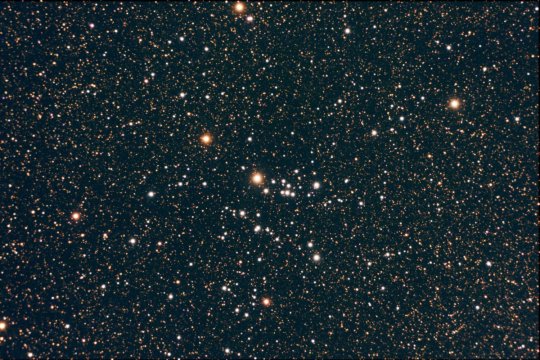
View On WordPress
#amateur astronomy#Astronomy#Cosmic Focus Observatory#cosmos#creation#deep sky#elements#Featured#image#life cycle#M25#Meade LX-90#Messier 25#nature#open cluster#photography#Population I#Population II#Population III#primaeval#Sagittarius#science#space#star birth#star classification#Stars#stellar population#Universe#world#ZWO ASI 071 Pro
0 notes
Text
Bulgarian Music in Studio Ghibli films
”Myth has it that Orpheus was born in what is now Bulgaria. It seemed to be fact, not myth, that his daughters are still singing there”
These words were written by the New York Times in the remote 1963 — the year in which the largest Bulgarian folk ensemble crossed the Iron Curtain to conquer an entire continent with its cosmic art.
The 1975 release of Le Mystère des Voix Bulgares, a compilation album of modern arrangements of Bulgarian folk songs, further popularized Bulgarian music, and in 1977, a vinyl record featuring the folk song “Izlel ye Delyo Haydutin” (Eng: Come out rebel Delyo) began its journey aboard the Voyager 1 and Voyager 2 spacecrafts.
From this point on popularity from the West spread to the East, and Bulgarian folk music made it to the entertainment industry, including legendary Japanese anime films, like the cult cyberpunk “Ghost in the Shell” or the heartwarming Studio Ghibli features.
In this short article I write about two occasions of Bulgarian music playing in Studio Ghibli’s films.
The record that inspired the creation of “Only Yesterday”
“Only Yesterday” is a 1991 Japanese animated drama film written and directed by Isao Takahata, based on the 1982 manga of the same title by Hotaru Okamoto and Yuko Tone. Set in rural Japan, the film draws parallels with the peasant lifestyle present in Eastern Europe.
The original work is a compilation of short stories about 11-year-old Taeko’s daily life in 1966. Director Takahata had a hard time making it into a movie since the manga, told in the form of a memoir, has no plot to hold a feature. Together with producer Toshio Suzuki, they came up with the solution of bringing the narrator of the story, adult Taeko, into the movie. But there is a curious anecdote about how this idea came to mind.
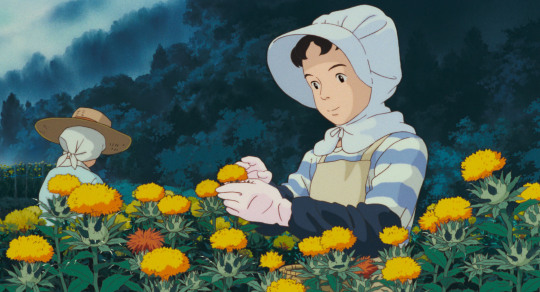
Taeko picks safflower as the Bulgarian song “Malka moma dvori mete” plays in the background. © Studio Ghibli
In a 2021 interview with students from Sofia University St. Kliment Ohridski, producer Suzuki recounts how a record of Bulgarian songs performed by the children choir “Bodra Smyana”, introduced to him by director Takahata, inspired the creation of the movie. Moved by the cosmic voices of the children, they decided to make “Only Yesterday” a musical. He also recalls what a tiring process it was to acquire the rights to the music, but if you’ve seen the movie, I am sure you will agree that it was worth it; the haunting, beautiful songs with the pastoral images of farmers picking flowers contribute to one of the greatest scenes created in cinema.

Producer Suzuki showing the record that inspired the creation of ”Only Yesterday”. Source: Studio Ghibli’s Twitter
In “Only Yesterday”, we can hear two songs from the album Bulgarian Polyphony I by Philip Koutev Ensemble. The upbeat “Dilmano Dilbero” [Eng. beautiful Dilmana] sets a happy mood as the protagonist gets changed and ready to go on the field. As the scene shifts and Taeko starts narrating a sad story about the girls in the past picking safflower with their bare hands, the song and mood shift as well.
While the first song has a fast rhythm, with lyrics about pepper planting that can also be interpreted figuratively, the second one, “Malka Moma Dvori Mete” [Eng., a little girl sweeps the yard], is a ballad about a young girl who is forced into marriage but has never known true love.
Both compositions sing about life-cycle events like marriage and the regular coming of the harvests, with lyrics perfectly fitting the setting and plot of the movie, which makes me wonder if the filmmakers chose them by chance or if they had someone translate the words.
Bulgarian Cosmic Voices Enchanting Howl
“Howl’s Moving Castle” is a 2004 Japanese animated fantasy film written and directed by Hayao Miyazaki, loosely based on the 1986 novel of the same name by British author Diana Wynne Jones. Set in a fictional kingdom the movie draws inspiration from various places in Europe. One of them being Bulgaria.
The story focuses on a young girl, named Sophie, magically transformed into an old woman, and a self-confident but emotionally unstable young wizard, Howl, living in a magical moving castle.
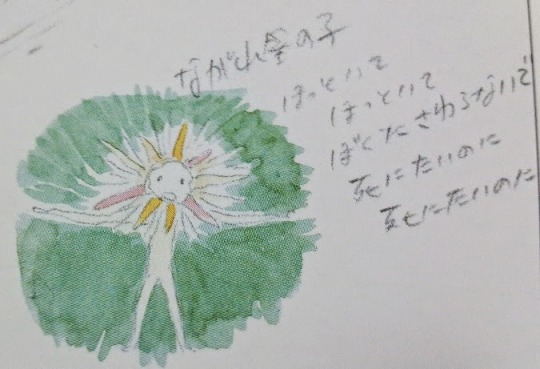
A sketch of a Star Child. Source: The Art of Howl’s Moving Castle
If you’ve seen the movie, you surely remember the scene when Madame Suliman ambushes Howl and tries to strip him of his magic powers. Star Children encircle him and his companions; their shadows grow big, dark and intimidating. They start dancing and chanting unintelligible magic words and are almost successful in their devilish act.
This scene, together with the music played in the background, have been a favourite of many fans of the film. Some even recount it giving them nightmares when they were children.
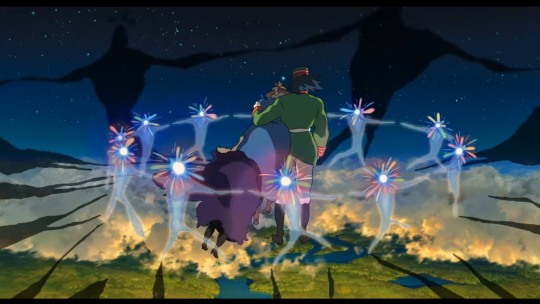
Star Children encircle Howl in an attempt to strip him of his magic powers. © Studio Ghibli
It turns out, however, that these aren’t any incantations, but the lyrics of a folk song. In Bulgarian. And a love song! Contrary to popular belief, the lyrics have nothing to do with magic and are actually about a boy taking his sweetheart, Dona, to the market to buy her new clothes. The excerpt used in the movie is very short and a bit altered from the original, but the words used go like this: Trendafilcheto, kalafercheto, Done mamino, translated as “the rose, the costmary, my darling Dona”.
I am planing a follow up article where I will post the translated lyrics together with a brief explanation on how they are related to the movies.
If you want to comment on or add something, I would love to hear!
Source
#studio ghibli#only yesterday#howls moving castle#Le Mystère des Voix Bulgares#bulgarian folklore#bulgaria#toshio suzuki#hayao miyazaki#isao takahata#bulgarian music in ghibli films#the boy and the heron#スタジオジブリ#ブルガリア#おもひでぽろぽろ#ハウルの動く城#宮崎駿#高畑勲#鈴木敏夫#bulgarian music
581 notes
·
View notes
Text
Revati's Mystery & Magic✨🐘🎭🌠
Revati is perhaps one of the most misunderstood nakshatras (although I'd say every nakshatra is misunderstood in one way or another because of how mainstream narratives about that nak focuses heavily on a few aspects and not others). Revati is the very last nakshatra and it lies entirely in watery Pisces rashi. It is also the concluding Mercury nakshatra. It is very interesting to me that the cycle of nakshatras begins in Ketu (Aswini) and ends in Mercury (Revati). Ketu is formless, it is the tail of the dragon and represents the subconscious realm or a state prior to the materialisation of spirit/form. Aswini is of course followed by Bharani nakshatra which is where creation takes root. The progression of nakshatras reveals a story about the development of humanity/civilization. It concludes in Mercury which is a eunuch/genderless planet and in the water rashi (the complete opposite of Aries which is a fire rashi). Once an individual has passed through all the previous stages, life concludes in water. (Proverbially life also began in water) and transcended beyond gender, concludes itself in a genderless planet, because someone who has integrated their masculine and feminine energies becomes unified; the true Androgyne.
Mercury represents the mind, both other Mercury nakshatras (Ashlesha & Jyeshta) belong to the rakshasa ("demonic") gana but as the concluding nakshatra, Revati belongs to deva ("godly") gana. All Mercury naks belong to water rashis (cancer, scorpio and pisces) however the fact that only Revati belongs to the Deva gana is very telling.
As the concluding nak, it represents how once an individual has gained mastery over everything, the only terrain left to conquer is themselves and their mind. We are all capable of both creation and destruction, just like water which is simultaneously life-sustaining but also capable of great catastrophes.
Revati has the largest yoni animal; the elephant. This refers to the immense capacity Revati possesses to hold within itself a diverse, vast and wide rage of skills, talents, knowledge and wisdom. The emotional reservoir runs deep.
The other Mercurial naks have the smallest yoni animals (cat & rat/rabbit) and restriction/limitation is a major theme through both those naks. However Revati is boundless and vast. It is NOT infinite however since water is very much a finite resource. Revati natives have a lot of energy and enthusiasm but they also feel drained and depleted after a point. This is in contrast to the infinite cosmic space and abundance possessed by Punarvasu or Swati; they simply NEVER run out of gas in their tank, they can give give give and not feel exhausted. This is a cosmic capacity given to a few. (I must add that both Punarvasu & Swati are also Deva gana nakshatras).
The word "Revati" in Sanskrit means "wealth" and while this manifests literally in the lives of many natives, it also points to spiritual wealth and the inner reservoir of these natives. Not coincidentally, many Revati natives experience extreme financial situations in their lives; usually following a very rags to riches path. Often times they are born into great wealth as well (as Claire Nakti's Nepo Baby research proved- Revati was the top nakshatra among them).
Those natives who grow up in dire circumstances are forced to cultivate other talents, skills, charisma etc that will later on help them build very abundant lives.
Revati has the cosmic purpose of "moksha" or "liberation" (the others being Artha, Kama & Dharma). When one has transcended all other previous stages, all there is left for one to do is seek Moksha.
Revati is said to be endowed with all 6 opulences beauty, wealth, fame, knowledge, strength and renunciation.
Revati natives have a certain natural flair for things, the combination of Revati's mercurial prowess with Pisces' Jupiter influence, endows these natives with an uncanny charisma and ability to read people/situations well and respond accordingly. Revati natives often have ✨presence✨there's usually a very ethereal, otherworldly charm to them; they do not seem to belong to this world, the rules dont seem to apply to them.
Obviously, they are often also naturally skilled at "manifestation" which is the art of creating your own reality. Jupiter's influence grants these gifts to a native.
One reason why they are so misunderstood is because they are so detached, they are kind of dreamy, kind of passive and distant. They are very self contained and this comes across as aloofness. They are by design unattached to things most people regard as precious; this is not because they are uncaring but because being the final nakshatra, they have surpassed all levels of pretense and value judgements; being misunderstood is hurtful but they can't stop being who they are.
They are eccentric, kinda offbeat and a little weird and they are largely detached from conventional society and trying to act "normal" in order to fit in.
A lot of people think they're crazy or weird and they are labelled as such but their madness is what makes them who they are.
One underrated aspect of Revatis is their geekiness tbh

Cardi B, Revati Moon
Cardi was on an episode of Hot Ones recently and spoke about how much she loves reading about history and WW1&2 and she geeked out about visiting Roosevelt's house/office and how that was such a big moment for her.

Angelina Jolie, Revati Moon
She has described herself as "I’m a closet foreign policy wonk. I’m a bit more boring than people would think… I’m a bit of a geek." and read any magazine interview of hers and you would know how well informed and educated she is about all the issues she puts her weight behind.

Kim Taehyung, Revati Moon
He loves art and has a lot of seemingly random trivial knowledge about a lot of different things. He's very diversely talented and has lots of random interests.
He said this in an interview:
"I’m someone who just really loves watching movies. Whenever I do, I find myself naturally drawn more to the villain characters rather than the heroes. When you watch a film, you have to look at the big picture, or the forest for the trees. I think that villains play a very big role in making that overall picture complete; they really have to sell their own charisma to make the movie come to life. If the villain doesn’t really have depth to their character, or if there’s no chemistry between the characters, then the hero can’t really shine either. So I always end up watching the villain characters closely. I’ve told a lot of my friends and people around me that I now have this ambition to play a villain at least once."
A lot of Revatis express feelings of being misunderstood and empathising with villains seems to be a running theme among many Revati natives.
This is Angelina Jolie's 2015 speech when she won Best Villain at the Kids Choice Awards:
"When I was little, like Maleficent, I was told that I was different, and I felt out of place, and too loud, too full of fire, never good at sitting still, never good at fitting in. And then one day I realised something, something I hope you all realise. Different is good. So don’t fit in, don’t sit still, never try to be less than what you are, and when someone tells you that you are different, smile and hold your head up high and be proud. And as your villain, I would also say - cause a little trouble, it's good for you."
Revatis are not a monolith and this nak manifests very differently in people (also affected by the rest of their chart) but I've noticed how many famous Revatis have battled substance abuse and other mental health struggles. Ex: Heath Ledger (Revati Sun & Rising), Angelina Jolie (Revati Moon), Jamie Lee Curtis (Revati Moon), Kevin Spacey (Revati Moon), Jared Leto (Revati Moon) many Revatis have also experienced abuse either as children or from their partners, this again includes, Jolie, Rihanna (Revati Moon & Rising), Shakira (Revati Rising), Whitney Houston (Revati Moon), Tori Amos (Jupiter in Revati atmakaraka), Maya Angelou (Revati Sun conjunct Jupiter), Ashley Judd (Revati stellium), Marilyn Manson (Saturn in Revati atmakaraka)
The thing about abuse is that you live with a lot of shame and are made to feel "different" from others, most abusers try to paint their victims as the bad guy who deserves to be "punished", this does explain part of Revati's association with villains (they're made to feel like the villain).
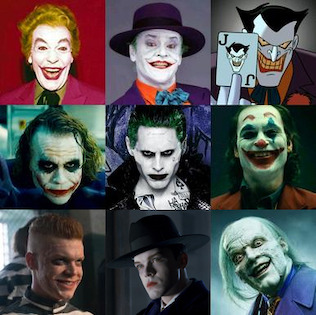
in her video Claire Nakti had explored how men who have played the Joker onscreen tend to have strong Revati placements, tying into how Revati is associated with the trickster archetype.
I think this has led to a lot of misunderstanding in the vedic community regarding the nature of Revatis.
Joker's origin story is that of a man who, while disguised as the criminal Red Hood, is pursued by Batman and falls into a vat of chemicals that bleaches his skin, colours his hair green and his lips red, and drives him insane.
It is a traumatic event/accident that drives Joker to the point of insanity and turns him into a psychopath. With that in mind, I'd already stated above how many Revatis seem to have suffered abuse in their lives (unfortunately) but I feel like especially among Revati men, suffering from abuse/experiencing trauma makes them more prone to being evil whereas it usually makes a Revati women more empathetic, kind and caring.
I'll use Jeffrey Dahmer (Revati Moon) as an example. He was largely neglected as a child as a consequence of which he had abandonment issues. Obviously not everyone who's neglected and abandoned grows up to be a serial killer & a cannibal but I feel like more often than not, Revati men are susceptible to the nakshatras darkness and instead of trauma being something that acts as a vehicle for radical personal change, they tend to be cruel and evil as a result of it.
Jeffrey Epstein, Kevin Spacey, Tony Robbins, Jared Leto (all Revati Moon) Alec Baldwin, Russell Crowe, and Steven Seagal (all Revati Sun) have all displayed varying degrees of cruel & evil behaviour.
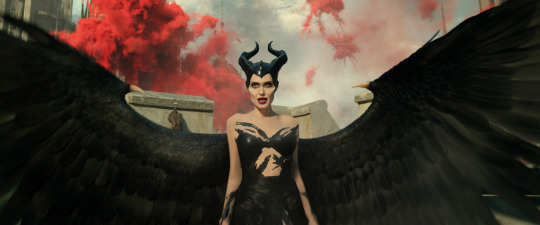
in the movie Maleficent, the titular character is not inherently villainous, bad or evil, she starts out as a regular gal and experiences horrific abuse, the trauma and pain of which makes her "villainous".
There is a very painful scene in the movie (spoiler alert!!) where Maleficent's wings are cut off by someone she considered a friend when she's in a drug induced slumber.
Angelina Jolie herself confirmed that the scene was a metaphor for rape.
"We were very conscious, the writer [Linda Woolverton] and I, that it was a metaphor for rape,' she explained of the act of violence that takes place as her character is in a drug-induced sleep. 'And that this would be the thing that would make her lose sight of that. While it is 'an extreme Disney, fun version of it', at its core, the film is about 'abuse, and how the abused then have a choice of abusing others or overcoming and remaining loving, open people'. 'The question was asked: "What could make a woman become so dark and lose all sense of her maternity, her womanhood and her softness?" Something would have to be so violent and aggressive.' [We] created a past for her that led to the moment in which she curses Aurora, then takes us past that moment from Maleficent's point of view,' she said."
This is not to say all Revati men are evil or unkind or that this nak manifests positively only for women.

Ben Mendelson (Revati Sun) is an actor known for playing the bad guy in most of his films.
"I think you've gotta enjoy the bad guys, to a certain degree. Unless what they do is so terrible, I think you're supposed to enjoy the bad guys. Vincent Price was probably one of the most enjoyable and successful bad guy actors of all time. He was doing terrible stuff, but we enjoy watching it. To me, that sort of character is what you want to aim for. You want to be enjoyable for an audience. What happens when a bad guy is enjoyable is that the audience gets to be bad for a little moment, too, and that's nice. It's nice, within the confines of watching a film, to get to be the bad guy."
This is far more mature and healthy response from an evolved Revati native.
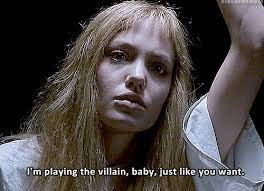
A scene from Girl, Interrupted starring Revati Moon, Angelina Jolie
Sometimes Revati natives play into the shocking and weird nature that people expect from them. They often play a caricature of themselves but due to their inherent watery nature and expansive Pisces tendency, its hard for them to do this for long, so they do things people dont expect of them, further confusing their audience.
The nurturing aspect of Revatis are often overlooked. The fact that they're tricksters and jesters doesn't take away the fact that they're highly empathetic and kind. The brighter the star, the darker the shadow, Revati natives are some of the most naturally gifted people, be it their beauty, charisma, talent, personality etc, they are so naturally abundant. However one must understand that abundance does not exist in a vacuum, there is a downside to every blessing. Its wise to not dwell in it too much but one must recognize it.

Rihanna (Revati Moon & Rising)
She's a singer, actor, businesswoman, billionaire, fashion icon and humanitarian and she's been doing al this since she was a teenager. Rihanna is a great example of the range of Revati in every regard, she's had her own fair share of pain, trauma, abuse and hurt but she's also a million other things.
Claire said in her video about Revati's hypersexual nature and fascination with sexual taboos. However I think Revatis have a very dual nature where they're either celibate and chaste or extremely indulgent.
In a 2003 interview, Angelina Jolie said this:
“I went for about two years with absolutely no man around me and then decided to get closer to men who were already very close friends of mine,” says Jolie, 28.
in a 2015 interview, Rihanna said this:
"I honestly think how much fun it would be to live my reputation,” she said. “People have this image of how wild and crazy I am, and I’m not everything they think of me. The reality is that the fame, the rumours — this picture means this, another picture means that — it really freaks me out. It made me back away from even wanting to attempt to date. It’s become second nature for me to just close that door and just be okay with that. I’m always concerned about whether people have good or bad intentions."
Rihanna, 27, is single and has not had a serious relationship since splitting with rapper Chris Brown, who assaulted her in 2009. She told Vanity Fair being famous had taken its toll on her love life, adding: “I mean I get horny, I’m human, I’m a woman, I want to have sex. But what am I going to do — just find the first random cute dude that I think is going to be a great ride for the night and then tomorrow I wake up feeling empty and hollow?I can’t do it to myself. I cannot. It has a little bit to do with fame and a lot to do with the woman that I am. And that saves me."
Revati natives radiate a very androgynous energy and have a highly integrated masculine & feminine nature.


Angelina Jolie (Revati Moon)
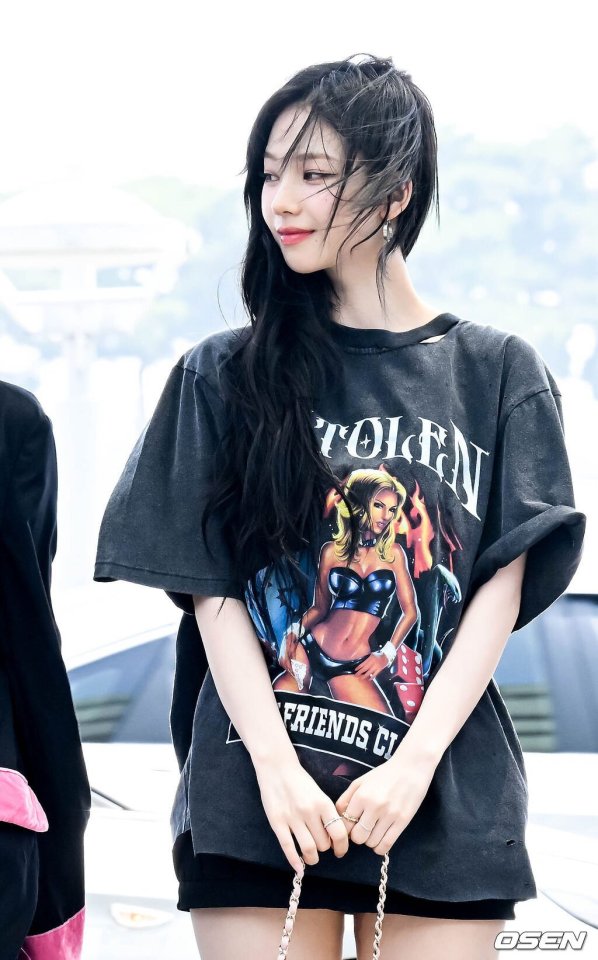
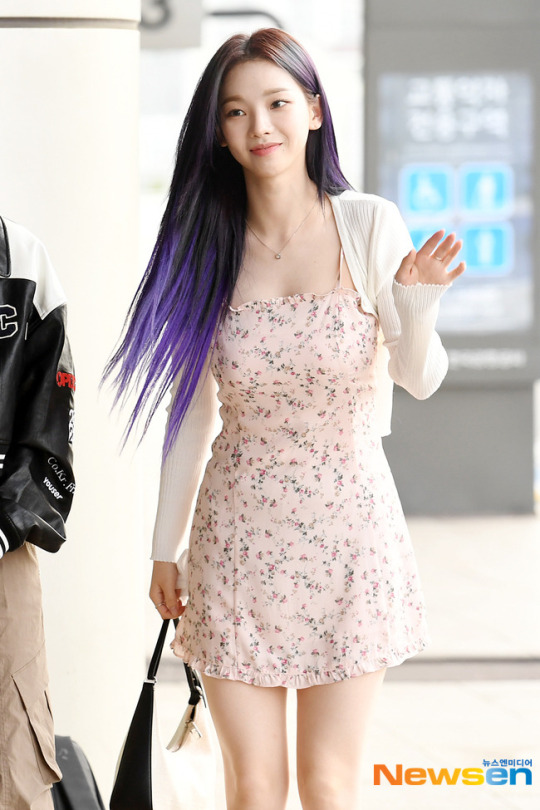
Karina from Aespa (Revati Sun atmakaraka)
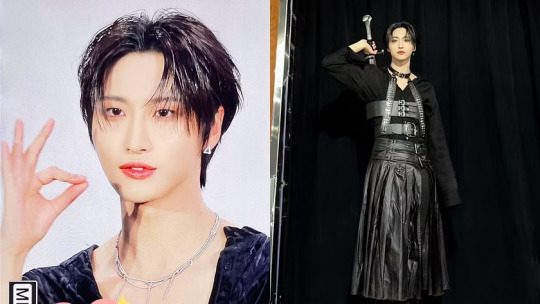
Seonghwa from Ateez (Revati Sun & stellium)

Kristen Stewart (Revati Sun amatyakaraka)
Naks that serve the cosmic purpose of Moksha (liberation) tend to make its natives very playful and suggestive. Its unsurprising that April Fools is during Revati’s season.
Revati individuals love to play the devil's advocate, they often like to be the contrarian purely for the heck of it. They live for the shock value and love to get reactions out of people.
Most of the time, its harmless, however of course, there are certain individuals who take it too far.

(im sorry that this whole post heavily features AJ and a few others, its just that their lives are heavily publicized so there are more examples to draw from😔😬 a lot of Revatis are super private otherwise)
From kissing her brother, openly talking about her interest in BDSM, knife play and wearing her husband's blood in a vial around her neck, Miss Jolie is Revati's trickster energy at its peak.

Rihanna has definitely earned the "bad gal riri" title for herself. In the late 2000s & early 2010s she drew a lot of flak for posing topless and nude, going back to the boyfriend who physically abused her and even releasing music with him in the face of public outcry, often showed up high out of her mind to events and shows and made many many controversial statements.


Jennie's career has been mired in controversy from the day she debuted. She has Ketu in Revati. She posted this iconic picture during the height of her dating scandal which featured several personal pictures being leaked (or were they photoshopped?).

Cardi B (Revati Moon) is always in the news, mired in one controversy or another, from her admitting to drugging and robbing men as a stripper, to throwing hands and mikes on people to plenty of other things, Cardi loves to shock people.

Taehyung (Revati Moon) as Joker for Halloween many years ago.
Revati is the birth nakshatra of Saturn and the exaltation of Venus.
Pushan is Revati's deity and endows the natives with the shakti to "nourish and protect", these natives have a deep love for animals and children.
Pisces is ruled by Jupiter whereas Revati nakshatra is ruled by Mercury.
Revati is such an interesting and slightly unpredictable nak because of the combined energies of Jupiter, Mercury, Saturn & Venus. This can manifest as brilliance and giftedness or this can make an individual go astray into the darkness. Natural talent can make people lazy and arrogant.
Revati is also a Mridu nakshatras, noted for their 'soft, mild or tender' nature <333
This nakshatra belongs to the Shudra caste which is one of the lower castes.
Revati natives often feel like outcasts in group settings, like they don't belong and struggle with fitting in.
Their struggles can manifest as nihilism, make them cynics or turn them towards spirituality.
Revati has Kapha dosha which contributes to the sluggish nature of Revati natives. They have a frenetic energy but they're also a little slow and dazed if you observe them. This is the dreamy quality we associate with these natives.
Belonging to Pisces rashi, I feel like many Revati natives could fit the bill for ADHD and perhaps suffer from insomnia or narcolepsy.

the movie Angel's Egg (1985) is a very Revati coded film
it was a collaboration between the artist Yoshitaka Amano and Mamoru Oshii.
Amano has UBP Sun, Revati Moon (and stellium, with Mercury & Jupiter, his amatyakaraka and atmakaraka respectively).
I dont want to spoil the movie because its a dialogue less vibey 1 hour animated masterpiece.
The art that Revati natives make are very disorienting and confusing for others although they're perfectly sensible to the natives.
Human nature can be strange and disturbing, but due to the expansive nature of Revati, it can hold many contradictory thoughts and ideas. The final nakshatra is one which encompasses all the teachings of every other nakshatra, it contains the sum of everything, joining the cosmic ocean where it unites with consciousness and returns to nothingness.
In Ancient Rome, there was a senator Terentius Lucanus who brought a slave named Terence to Rome. He took him under his wing and educated him and soon freed him out of his amazement of his abilities. Terence went onto become a famous playwright around 170 BCE. One of his famous quotes was:
“Homo sum, humani nihil a me alienum puto,” or “I am a man, I consider nothing that is human alien to me.”
This is the best way to sum up this nakshatra. Out of unfairness, misery, poverty and darkness, these natives rise, overcome their challenges with ease and don't hold it against anybody. I am human so nothing human is strange to me.
#revati nakshatra#sidereal astrology#astrology notes#vedic astrology#astrology observations#vedic astro notes#astro notes#nakshatras#astro observations#astrology#astroblr#pisces#ubp
292 notes
·
View notes
Text
𝗞𝗲𝘁𝘂 𝗗𝗼𝗺𝗶𝗻𝗮𝗻𝘁 𝗧𝗵𝗲𝗺𝗲𝘀 — 𝐍𝐚𝐤𝐬𝐡𝐚𝐭𝐫𝐚 𝐎𝐛𝐬𝐞𝐫𝐯𝐚𝐭𝐢𝐨𝐧 𝐒𝐞𝐫𝐢𝐞𝐬 (part 1) 𝐨𝐟 𝐩𝐚𝐫𝐭 𝟏𝟎
disclaimer: spoilers for all movies or shows mentioned.
the warnings: mentions of drug abuse, sexual violence, self-harm, genocide, mental disorders/illnesses, cannibalism and self amputation.
The most interesting theme within all the Ketu nakshatras was one that was unexpected, as it is common to mainly associate Ketu with concepts of disconnection or isolation from society as a whole -- since Ketu is often linked with the 12H. But it is more about the interactions with the unseen forces within society more than anything. Because the 12H also represents the collective's consciousness and all the interconnected energies that come with that which Ketu becomes possessed by. And it is Ashwini that is the most sensitive Ketu nakshatra, as it easily becomes consumed & absorbed by these 12H energies which often leads to chaos and loneliness.

Ashwini nakshatra embodies Nothingness which is the oldest energy in the universe. It's between a space before actualized creation, and after the rise of awareness that's emerged from Nothingness (or the Cosmic Void). It is very fitting that this is the first nakshatra; but it should also be considered the last as it essentially represents the non-duality of Life & Death. This theme is further extended in Bharani and beautifully explored in that nakshatra, but in Ashwini we focus on the spirit's evolution. The energy found in this nakshatra is as undeveloped as it is chaotic, which is why evolution needs to take place -- and this usually involves extreme harsh forces to tame it. It is in Ashwini where there's confusion or lack of self-awareness of one's own identity as energies here become repressed, unconsciously accumulating. I'm going to use some films as examples to explore this point.
First, I'm going to use the most typical Ketu-coded character. Ashwini Moon Christian Bale's Patrick Bateman in "American Psycho". This film follows an investment banker who relishes in the wealthy excesses of his superficial lifestyle in which everybody else around him also revels in. His life is empty, mostly revolving around getting into exclusive restaurants, wallowing in designer suits, having a meticulous morning routine etc. There's a pressure in general for conformity and Ashwini is sensitive to these energies which they take up, driving them to compete and also go too far with this -- because it's no longer about conforming anymore. It's become an obsession, and these pressures drive Patrick Bateman into homicidal tendencies as an outlet. This film perfectly encapsulates modern-day consumerisms, and it is of course an Ashwini native who is driven into a descent of madness from this empty, superficial culture he's subjected to.

Nothing can fill up the emptiness inside of him and he knows that. This crippling, painful understanding is what continuously manifests his violent self-hatred and hatred towards others. And this is why he is forever trapped in a cycle of loneliness, as he is surrounded by the same narcissistic, self-absorbed suits who will continue to maintain this soulless, superficial culture.
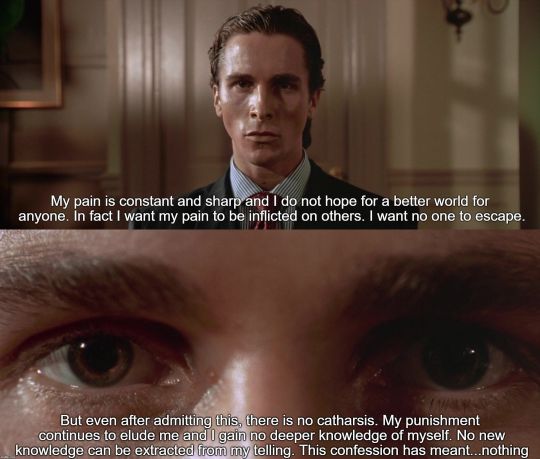
The movie was adapted from the book with the same name, written by Mula Moon Bret Easton Ellis whose own experiences inspired the book "American Psycho".
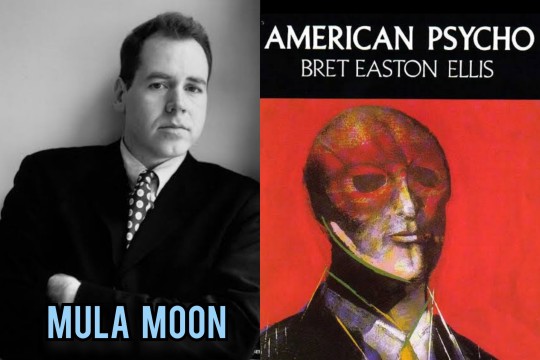
Quote from an interview; OregonLive (2010);
"[Patrick Bateman] did not come out of me sitting down and wanting to write a grand sweeping indictment of yuppie culture. It initiated because my own isolation and alienation at a point in my life. I was living like Patrick Bateman. I was slipping into a consumerist kind of void that was supposed to give me confidence and make me feel good about myself but just made me feel worse and worse and worse about myself. That is where the tension of 'American Psycho' came from... It came from a much more personal place."
-- Mula Moon Bret Easton Ellis
Now, onto the movie "Fight Club", which was directed by Magha Sun David Fincher, and stars Magha Sun Edward Norton and Mula Sun Brad Pitt.
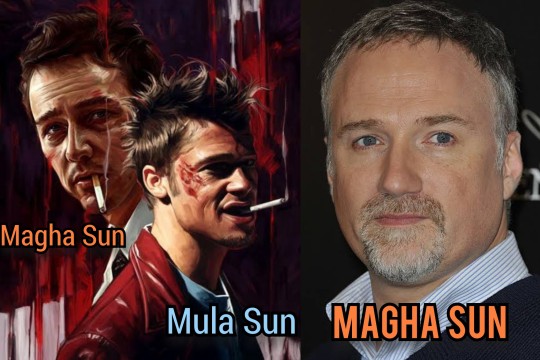
The most highlighted character from this film, played by Brad Pitt, is Tyler Durden, who plans on making a revolution to destroy the hyper-capitalistic, materialistic superficial culture that we saw destroy Patrick Bateman from the inside in "American Psycho".
(video - 🎧)
Of course, just like Ashwini Moon Patrick Bateman took his obsessive consumerism too far; Mula Sun Tyler Durden lays on the opposite spectrum -- aiming to destroy modern society by blowing up all credit card companies and ruining the world's economy. Mula is related to destruction as it is ruled by Nirriti, the goddess of destruction. The oppressive forces that weigh on this Mula character, Tyler Durden, causes him into a spiral for freedom (9H), using extremities and acts of terrorism to be rid of ego/society. Whereas Ashwini, having no solid identity and just being undeveloped in nature, is more likely to conform; but so long as Ketu is there, there will always be an emptiness in the ambitious pursuit of things. Ashwini can grant excess wealth and fame, but with no inner fulfillment or balance, you see characters like Patrick Bateman. Or Daniel Plainview from "There Will Be Blood".
A movie directed by Paul Thomas Anderson who has Ketu in Magha, and stars Ashwini Moon, Mula Ascendant Daniel Day Lewis who portrays Daniel Plainview. Plainview is more Ashwini, as he is an extremely ambitious, capitalistic and competitive oilman.

His pursuit for wealth and power leads him to personal loneliness, isolation and emptiness -- we see how Ketuvians become so drained and eaten alive by the energies they absorb in the pursuit of things. Similarly to Patrick Bateman, he not only hates others but himself and wishes for no one to succeed in life.
(click on the gif(s) if they're buffering lmao, i swear they're cheap)


His primal competitiveness and self-loathing even drives away his only family -- his only child. His adult son means to do his own oilrig business and cuts his partnership with him. But Plainview's unchecked ambition shows that even after attaining success and power, he literally goes ahead to disown his own son as he considers him competition now. And now he extends the same hatred he has for others to him. Further isolating himself; this validating his deep sense of loneliness that was always there with his self-loathing.

The film ends in an Ashwini fashion; in which Plainview goes into a psychotic meltdown and murders someone who he has had a long stewing hatred for.
(YouTube clip by me - 🎧)
youtube
I wanted to provide a brilliant video from the YouTuber "The Vile Eye", who explored the dark nature of this character; because it perfectly illustrates Ashwini nakshatra in a twisted way -- especially in how Aries in this segment is influenced by Ketu forces. Everything about this character is every Aries stereotype you can think of from the top of your head, but Ketu exaggerates it to the point of extremity and tragedy.
youtube
Amazing video for anyone who wants to understand Ashwini at its extreme which can manifest in real life of course.
Now in the series "Peaky Blinders", which I quickly wanted to mention, stars Ashwini Moon Cillian Murphy whose character faces moral dilemmas, as his relentless pursuit of power contributes to his moral ambiguity.
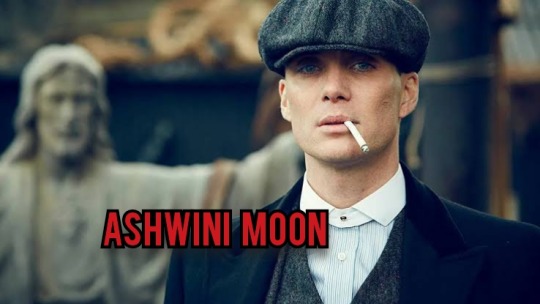
His ruthless ambition to become the most powerful in the criminal underworld is something I couldn't help but relate it back to Ashwini's drive & competitiveness.
The movie "Scarface" stars Ashwini Sun Al Pacino who plays Tony Montana. And fun fact, Tony Montana is loosely based and inspired by the real-life figure, Al Capone, who was literally a goddamn Ashwini Moon. So, I say Scarface is a fucking Ashwini movie.
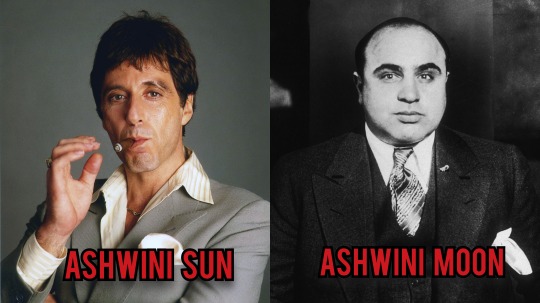
Both Tony Montana and Al Capone had unchecked ambitions and an unrelenting desire for power. In Ashwini, extreme power can be attained, and we saw how Tony Montana quickly rose to it (as Ashwini is the Star of Transport and it is associated with Shidhra Vyapani Shakti which translates to 'The Power to Quickly Reach Things'). Similarly, Al Capone was also driven by the desire for power and he attained it.
Like Daniel Plainview in "There Will Be Blood", Tony Montana starts to experience isolation after all of his achievements. His chaotic behaviour contributes to his alienation, and he starts to feel intensifying loneliness, which seems to be a theme with this nakshatra. And this film also ends in Ashwini fashion; with absolute chaos, the psychotic unraveling of Tony and of course death.
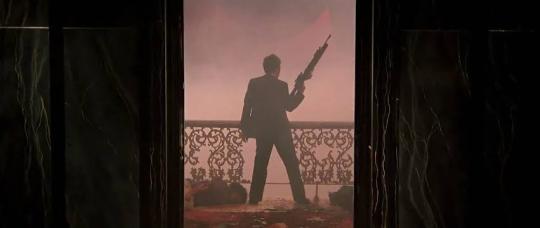
I wanted to also add in the movie "Nightcrawler" which stars Mula Sun Jake Gyllenhaal who plays a character willing to go to the extreme lengths for success and personal achievement, to the point of exploiting others and not giving two fucks about ethical boundaries.

He has a distorted view of success and has an unchecked, ruthless ambition which is common in Ketu nakshatras. He is also a socially isolated character, behaving inappropriately as he is disconnected from social norms. He lacks zero empathy. In his obsessive & relentless pursuit of success, he is devoid of humanity. Had to mention this film because these themes are not exclusive to Ashwini.
But as I did mention, Mula is more likely to be aware of societal pressures and these natives often feel deeply disturbed by them -- while Ashwini is more focused on the Self, as it's ruled by the 1H. In the film "Falling Down", Mula Moon Michael Douglas plays a character who has become disillusioned and is now aware of the pressures and oppression caused by the modern-day life. This movie is literally directed by Magha Sun Joel Schumacher.

He confronts many issues such as homelessness and crime, which are heavily rooted in the greedy, capitalistic system of modern society. But he becomes violent and chaotic himself, going into a descent to madness (from absorbing the energies felt by the collective who also feel the weight of these oppressive forces within society). This movie deals with the consequences of unchecked rage, a theme shared in all Ketu nakshatras.
The film "Taxi Driver", which stars Magha Sun Robert De Niro and is directed by Magha Ascendant Martin Scorsese, depicts a man who suffers from extreme loneliness, alienation from society, and struggles with existential crisis. The film explores social decay; such as social disparities, the disillusionment of our main character to society's ills, crime, poverty etc. He goes into a descent into vigilantism, using violence as a catharsis which is a common thing for these Ketu nakshatras (mainly Magha and Mula as it looks at societal frustrations and the emptiness in life/modern culture).

The character also suffers from a possible case of untreated mental illness, and insomnia -- and this seems to be a theme with all Ketu nakshatras in general.
Another film where the main character suffers from extreme insomnia is "The Machinist", starring Ashwini Moon Christian Bale whose character's insomnia and untreated mental illness literally contribute to his isolation and alienation.
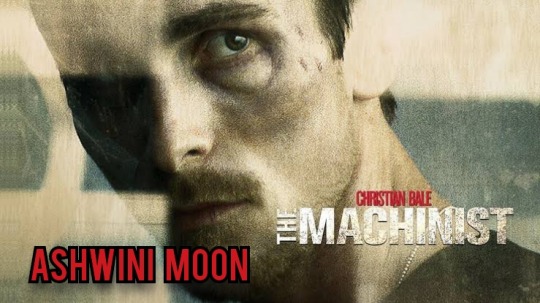
will be coming back to this film in my part 2 post
And the film "Fight Club", in which Magha Sun Edward Norton plays an insomniac character who has dissociative identity disorder. And his split personality is interestingly played by Mula Sun Brad Pitt.
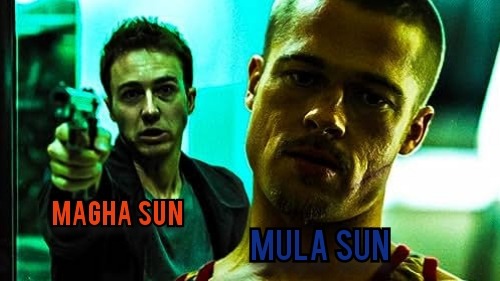
Then we have the film "Insomnia", directed by Ketu in Magha Christopher Nolan, starring Ashwini Sun Al Pacino who plays an insomniac detective who faces some mental challenges.

There is a spiritual belief about insomnia, which suggests that there may be a disturbance in one's spirit; unresolved issues that have been long suppressed can be linked to an imbalance of energy within the body. This causes restlessness and more mental problems. This could make sense as Ketu and the 12H deal with what is unconscious -- and how that tends to be our deep, rooted traumas and the way in which they affect us & those around us. And not just traumas, could just be repression of one's own internal suffering from either loneliness or external pressures. We see this with Patrick Bateman, whose only outlet is literal murder, or Tyler Durden's 'revolutionary' fight club causing more destruction around him as planned. Both characters violently act out from these unaddressed decaying energies within themselves and from within society.
The series "Sharp Objects", directed by Magha Moon Jean-Marc Vallé, mostly deals with family traumas, but also shows how those traumas and unresolved energies literally cause death and chaos around them.

Camille Preaker, who is played by Magha Sun Amy Adams, is deeply traumatized and troubled. She has a history of self-harm and has many scars on her body; her self-destructive behaviour is a coping mechanism for what happened when she was young (sexual violence by a group of boys and witnessing the slow, painful and preventative death of her sister). Then we have her younger half-sister Amma, played by Magha Moon Eliza Scanlen, who has a hidden dark side that has been shaped by the family's troubled history and generational trauma. By the end of the series, we find out that Amma is the killer of the violent murders that have shocked the townspeople of Wind Gap. It is Amma who is responsible for all of the gruesome deaths of the girls whose teeth were removed. As Camille's coping mechanism is cutting herself as self-punishment for all the guilt she harbours from the death of her sister, Amma literally commits homicidal acts. All of this connecting to just how messed up, and complex, their trauma and the community they grew up in is. And then we have their mother, played by Mula Moon Patricia Clarkson, who has Munchausen syndrome and is responsible for the death of her oldest daughter. Camille was a witness to her sister's suffering and death, and she sees her mother as a monster and now her little sister is an extension of her. This series is such a good example of how our own personal unchecked traumas affect others, especially those who aren't involved. And how much destruction can be caused, as we see with Amma killing other girls as an 'outlet'. This is why I now realize how wrong I was about Ketu, as Ketu is not necessarily about isolating from society. Regarding society, Ketu will be the complex yet intricate unaddressed/rotting energies within society, and it always relates back to individuals' personal generational traumas. It makes sense that Magha relates to ancestry roots and origins of oneself, even the origins of one's trauma.
Now onto the film "Nocturnal Animals", which is directed by Magha Sun Tom Ford, stars Magha Sun Amy Adams and Mula Sun Jake Gyllenhaal.

Amy Adams plays Susan who is a successful art gallery owner. She receives a manuscript for a novel called Nocturnal Animals sent to her by her ex-husband Edward who's played by Jake Gyllenhaal. The book is extremely violent & tragic; but it actually turns out to be a symbolic reflection of their relationship and marriage. Bringing in the Ketu themes of unresolved trauma and getting to the roots of it (Mula theme). This book serves to make Susan confront how much of her actions fucked him up. The movie focuses on the confronting of one's past, telling of how trauma will still continue to shape the lives of those involved. And the movie shows that even Susan still has unresolved issues just by her repulsed reactions to extreme parts of the novel.
The movies "Split" and "Glass", stars two Ashwini Suns, Anya Taylor Joy and James McAvoy. McAvoy's character, Kevin, has dissociative personality disorder and these different personalities exist to keep him safe. His trauma is so extreme and deeply painful that it manifested into the creation of The Beast, the most dangerous and superhuman personality. Three kidnapped girls are prey to The Beast as they end up being devoured by it but there is only one doesn't fall victim to him -- and that's Anya Taylor Joy's character Casey.
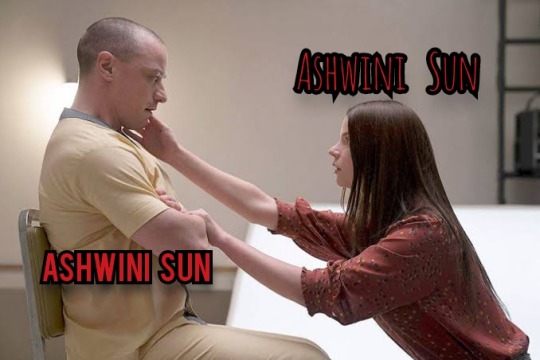
The reason why she doesn't fall victim is because she, too, has suffered extreme trauma and her resilience through it is what creates an immediate connection with Kevin. It is when The Beast sees her scars that he calls her pure, implying that those who have been damaged are the ones who are truly evolved.
(YouTube clip by me - 🎧)
youtube
Also, "Split" is another example of how deeply repressed energies and traumas of one can ruin everything around them and victimize those close to the Ketuvians (usually uninvolved people's lives being violently taken; "Split", "Sharp Objects", "American Psycho", "Falling Down" etc.).
Ashwini Moon Zendaya in the series "Euphoria" plays a character, Rue, who has been through a significant amount of trauma, including the passing of her father. She uses self-destructive ways to cope with her deep emotional pain and grief, very similarly to Magha Sun Amy Adams's character in "Sharp Objects". Rue uses drugs to numb herself from her harsh realities. There is a moment in the series in which she has a chaotic meltdown.
(YouTube clip by me - 🎧)
youtube
Something I now understand with Ashwini is how explosive, volatile and scary its ungrounded energy can be -- exactly why I'd commonly associate it with hysterical meltdowns which can lead to accidental or unplanned homicidal acts or other forms of harm/self-harm. This scene of Rue is vaguely taking me back to Ashwini Moon Christian Bale's spiraling and meltdowns in "American Psycho".
(YouTube clip by me - 🎧)
youtube
Ketu, especially with Magha, seems to cause erratic behaviours when its natives aren't purified of their long-accumulated baggage in their unconsciousness -- exactly why the 8H is also ruled by Ketu as Scorpio shares this particular theme. As long as there is deep disturbance and imbalance in the body, there is no rest for the soul -- even for future incarnations to come.
But now, I want to touch on the senseless harshness of Ketu. Remember, this energy embodies the eternal sucking void. Mula nakshatra relates to the center of the cosmic void and goes straight into the roots of it. Ashwini has already risen from it, while Mula is centering itself back into it. Mula is where we seek an awakening to the truth of what is behind reality. What is on the other side of the cosmic void? Truth is searched in Mula, but it seems that it is Ashwini that understands that chaos is the absolute truth of reality. There is no meaning to anything, which sounds nihilistic, but it is what makes life beautiful.
In the film "The Pianist", written & directed by Magha Sun Roman Polanski, starring Ashwini Sun Adrien Brody, starts out quite warm with a well-put together family and a handsome talented Ashwini man who dreams of being a pianist. But things take a drastic turn. We see a once bright-eyed boy turn into the shell of the person he once was after going through such harrowing events, and things just keep getting tragically worse and worse until there is not even a sliver of hope anymore. The majority of the film is literally just despair, senseless cruelty, and the protagonist's soul slowly becoming annihilated.

I've never watched a film more Ketuvian than this; surrounded by genocide, death and being completely isolated while being eaten by one's own lonely misery.
One moment you think one character is going to make it out alive somehow because they have the conviction and drive to survive, but the film immediately takes that idea away as they helplessly die. You think the protagonist is going to see some light, and the film even makes you slightly comfortable in some moments given the harsh realities, but you witness just how everything remains tragic. There are no answers to any prayers, as suffering is just ongoing. This tonality creates another layer of feeling trapped, and you watch as the character just lets life do whatever it wants to him as he is trapped in a world where he is helpless anyway. With Ketu, you realize that there was never any security or answers to this senseless chaos in this world to begin with.

But his survival at the end makes you question why he even went through all of that. There was no lesson to be taken from such a tragic, horrifying experience. Why did his other friends and family die but not him? In the end, he became a successful pianist as he dreamt of from the beginning. He was exceptionally talented from the start; these events took everything away from him except his passion for the piano. What he went through was senseless, as Ketu has no prime motivation. Saturn will push you through the worst so that you can reach a level where you can now attain all of your reaped rewards, Ketu doesn't care for what you get in the end -- that's Rahu's objective, as Rahu deals with ego; Ketu deals with the evolution of one's soul and that usually involves its annihilation.
The kdrama "Save Me", stars three Ketu natives; Magha Moon Seo Yea-ji, Mula Moon Woo Do-hwan and Mula Sun Ok Taec-yeon. It follows Seo Yeah-ji's character, Sang-mi, and her family after moving into a new town. They become influenced and entangled by a religious cult. Sang-mi becomes aware of just how oppressive and dangerous the cult is when she & her family literally lose all control to them. Sang-mi's attempts to escape become futile, as she remains trapped under the oppressive abuse of the cult, turning her more into a shell of the person she once was.
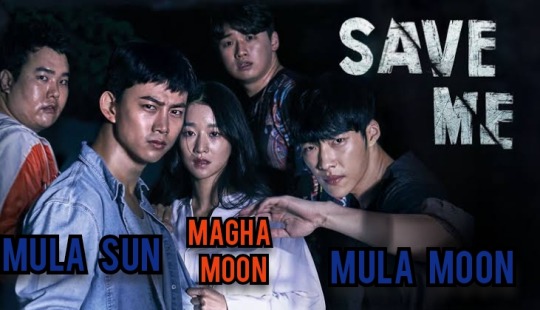
(The Mula male characters are the ones who find out about the Magha girl's whereabouts, and they plan to save her and her family from the clutches of the cult.)
She witnesses extremely harrowing events, and the drama makes you feel the sense of hopelessness that she's feeling -- trapped and completely helpless no matter how much she tries to save herself and family. There is a similar sense of hopelessness and lose of one's own identity found in "The Pianist", but in this drama it's more about extreme involuntary isolation from society (which I will be expanding on in part 2 of this exploration).
The film "Society of the Snow" is literally directed by Ashwini Moon J.A. Bayona, based on real life events. There's a documentary based on these events as well, "Stranded: I've Come From A Plane That Crashed On The Mountains", directed by Magha Moon Gonzalo Arijon.

Now, in the "Society of the Snow", there is a tone of hopelessness set in the film because of the gruesome reality that these characters (based on real life people) experience. And never in their lifetime did they think that everything was going to change so drastically from just living the average life of normal teenage boys. These characters, who were in a rugby team, get on a plane that would soon crash onto glacier surrounded by endless cold harsh mountains -- with just a piece of the wrecked plane remaining in which they take shelter in. The protagonists are surrounded by the dead bodies of friends who did not survive the crash, and now they must spend the first night in harsh coldness while many are severely injured. They couldn't even sleep, the first night being spent with many of them crying and wailing out loud, nearly freezing to death. One day after, a rescue helicopter searches for them, and they all scream out for help. But the helicopter misses them as they're barely noticeable under all the glacier that surrounds them. This is when the sense of hopelessness and despair kicks in and intensifies as the story progresses. Now that chances of being rescued have completely fallen to zero, they realize that they can't ignore their growing hunger anymore. They all have no choice but to eat the flesh of the dead bodies after running out of chocolates. We see how these decisions mentally challenge some of the characters. It is truly tragic as they were stranded, isolated from the world and completely in despair in every waking day, for a span of 72 days.
After being rescued, we see just how malnourished they were from the looks of their bodies. They come back home bone-skinny and weak. And the monologue in the ending scene tells us how the survivors wondered; "Why didn't we all get to come back [home]?" "What is the meaning of it all?" These are the questions asked when we observe these raw Ketu events.
Ashwini Moon J.A. Bayona also made the film "The Impossible", which is about survival and resilience -- based on real life events. Much like "Society of the Snow", it also has a sense of complete despair and there is an involuntary separation of a family (which reminds me of "The Pianist" in which Ashwini Sun Adrien Brody's character is also separated from his family in the story).

"Nothing is more powerful than the human spirit" it writes on the poster.
"Nowhere", is directed by Ashwini Moon Albert Pintó, a survival thriller about a pregnant woman who finds herself isolated from society as she's drifting in the sea trapped inside a container. Because of her newborn baby, she is forced to survive and protect her child even when there is no hope. The reason why she's even in the container is because she was fleeing a society of a dystopian future in which women & children are caged and murdered (Ketu's oppressive forces and her attempt to run away from them leads her to total isolation which is another manifestation of Ketu).
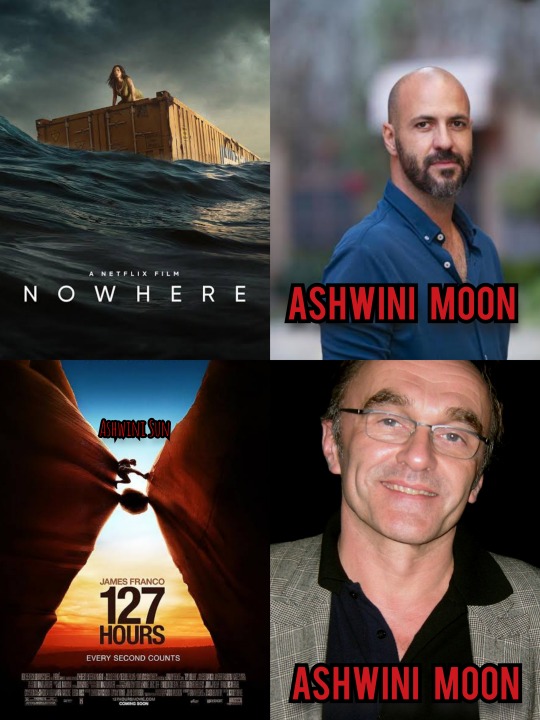
And we also have the film "127 Hours", directed by Ashwini Moon Danny Boyle, starring Ashwini Sun James Franco who plays Aron Ralston whose right arm becomes trapped against the canyon wall when he was on a solo canyoneering trip. When he is unable to release himself, we realize the severity of his situation. He is completely isolated and alone. His own supplies running out and he's losing his mind. The struggle for survival and one's own helplessness is a theme of Ashwini nakshatra as this eventually drives one into taking extreme measures for freedom -- as the audience sees him resorting to cutting his own arm off.
These themes seem to speak of the power and resilience of the human spirit, as emphasized in "The Impossible" and "Society of the Snow". Our ability to survive even just our own personal traumas must be a testament to our spirit being an extension of the Higher Power which is behind the happenings of all of these senseless yet significant experiences and events we go through.
It is in Ashwini that one's experience through harsh forces contributes to the spirit's evolution after total annihilation, which leads us on the path towards moksha. This is particularly why I state that Ashwini must be the last nakshatra, in my opinion of course.
Ketu is very pure by nature, and it wants to destroy impurities. The repression of one's accumulated dirt can manifest in destructive tendencies, this being a misdirected flow of Ketu energies wanting to express the very raw forces we're wired to run away from. By facing one's true inner self and embracing your entirety is how you embrace Ketu in general. But one must go deep and inward. All three Ketu nakshatras deal with getting to the roots for this reason.
Ashwini is ruled by the Ashwini Kumaras, gods of medicine and healing. Also known as divine physicians. In order to heal, one must get to the root of all disturbances in order to create the perfect medicine to heal. As Ashwini is ruled by the 1H, this does involve getting into the roots of oneself for self-liberation. Magha, on the other hand, is about tracing your own existence back to the consciousness of others -- usually family members and ancestors. Magha relates to generational trauma and shining light on that in order to be freer. Mula is symbolized by the roots of a tree, and 'mula' translates to 'roots'. It signifies ancestry roots as well, but mostly the truth. Mula is where disillusionment takes place as one gets directly into the roots of everything; going right into the galactic center -- which can also signify going right into the roots of our demons and letting all of that rotting energy burn from your body. And after this purification process, one's consciousness raises by default.
Ashwini has strong, undeveloped energies which can be tamed and grounded to be properly channeled -- in order for this to be achieved, one must let go of poisonous impurities so that they're no longer controlled/possessed by unseen forces. It is in Ashwini that we expand on the interconnection of the collective consciousness being tight, as this was secretly discovered in Uttara Bhadrapada and remembered in Revati. Ashwini nakshatra is extremely sensitive to outward energies, as are the rest of the Ketu nakshatras. Every individual's consciousness is affecting the whole world somehow. This being a Ketu theme in general describes the whole energetic field of the world and how we each play a part in it and affect each other's lives. As all Ketu nakshatras deal with getting into the roots of things, we must get dirty by digging into our own roots which are connected to the reasons for our layers of repressed emotions such as rage, numbness, resentment, hatred and grief which are commonly harboured in Ketu natives. These unconscious emotions, which form our Shadow Self, contribute to how we interact with the world and other people -- and there's always that capacity to harm or further traumatize others because of our own unchecked, hidden troubles. Mula also perfectly shows how all of the complex, interconnected traumas of everyone else are intertwining and creating more chaos and confusion in society; and the disillusionment to how the oppressive systems of society are just breeding more of these pains & troubles -- which in turn, in Ketu fashion, demonstrates just how trapped everyone is.
Continued in Part 2 of this exploration
#ashwini#aries#magha#leo#mula#sagitarrius#1st house#5th house#9th house#vedic astrology#astro observations#astrology#sidereal astrology#nakshatra series#vedic observations#sidereal observations#Youtube
273 notes
·
View notes
Text
What is the New Age to Alt Right Pipeline, and how do you stay out of it?
The term "New Age to Alt Right pipeline" refers to the way alternative spirituality and healthcare often serves as an entry point to far right radicalization. While many people are dismissive that such a thing could even exist, plenty of people in occult and witchcraft communities can confirm that it is very much a real thing. Having studied far right conspiracies myself for awhile now, I can personally confirm that a number of people involved in alternative spirituality, including ones who consider themselves progressive, are spouting off the very same conspiracy theories used to justify persecution of the Jews throughout the Middle Ages to the Nazi regime.
Even if you don't reckon yourself a New Ager, you are still likely to come across this stuff because there's no hard and fast place where New Age ends and witchcraft, neopaganism, or whatever begins. While the core and arguably most defining belief of New Age is that the Earth is on the cusp of entering a new cosmic cycle, there's a significant amount of overlap between things New Agers are into, and things that other people are into.
For example, someone interested in Wicca might start researching the Goddess, and from there very quickly encounter conspiracy theories claiming that everyone was monotheistic for the Great Goddess back before The Patriarchy Tee Em invented a male god for people to be monotheist for. From there, it's just a short matter of time before they start coming across materials claiming that the Jews are responsible for the creation of this god, and also responsible for the Catholic Church, and so on. (Pro tip, the Roman government was responsible for the Catholic Church.)
The best way to keep yourself safe from this isn't to simply avoid all material that might potentially contain far right ideas and conspiracy theories. Rather, it's to learn what they look like. Here's a few things to watch out for:
The grand conspiracy narrative: The exact details you'll hear will vary depending on who you're listening to - every conspiracy theorist tailors and re-tailors the grand conspiracy narrative to suit their own agendas and beliefs. The key details to watch out for are claims that there's this secret group that's been pulling the strings behind the scenes for a long while now, and that their agents are working everywhere to make sure the people stay deceived.
To be blunt about it, literally every conspiracy theory about a New World Order, a shadow government, generational satanists, satanic bloodlines, reptilian bloodlines, and so on is a riff on the material found within The Protocols of the Learned Elders of Zion, a czarist hoax used to justify violence against Russian Jews, and later on, the Holocaust. There are no exceptions.
During the Satanic Panic, many people claimed to have been part of such a conspiracy. Investigations failed to turn up any real evidence, and those pushing these claims always turned out to have a history of dishonest behavior, or had been subjected to hypnosis by someone with a history of dishonest behavior and/or a gross disregard for medical ethics.
If you see someone claiming to have been part of something like this today, your best assumption is that they are lying to you, or are extremely confused. End of story.
Great Goddess conspiracy theories: Back in the mid-19th century, Eduard Gerhard proposed that people all used to worship the Great Goddess, until patriarchy came along and replaced her with a god. There's literally no evidence for this whatsoever, but a lot of people who believe that patriarchy is part of a grand conspiracy still believe this one. You'll often see it in conjunction with stuff about the "divine feminine" and womb magic among those who believe that patriarchy is part of the grand conspiracy.
Claims of mass ritual abuse and murder: An allegation that goes back to blood libel and the witch trials, far right conspiracy theorists often claim that there is an underground network of cults practicing ritual abuse and human sacrifice. This was the kind of thing that people were put under hypnosis to try and remember during the Satanic Panic, based on incorrect beliefs about how memory worked. (In reality, going under hypnosis to try and recover lost memories mainly results in fabricating completely new ones, because hypnotic visions basically work just like dreams.)
Claims of mass mind control: Not many people realize this, but this one goes all the way back to the witch hunts, when alleged witches were accused of ensnaring people's minds with their diabolical spells. (Yes, the witch trials were fueled by conspiracy theories!) Today's conspiracy theorists claim that the conspiracy uses things like music, movies, implants, subliminal messages, drugs, medications, 5G, extreme tortures, and more to put people under total mind control. The whole Project Monarch conspiracy theory is part of this; and a number of people were also put under hypnosis to "remember" being part of Project Monarch during the Satanic Panic.
Anti-pharma/anti-vax conspiracy theories: During World War II, Nazis demonized pharmaceutical drugs as "Jewish science" so they could push cheaper herbal remedies, which were largely ineffective. If you see somebody claiming that pharmaceutical drugs or vaccines are created by the conspiracy to keep people sick or make them easier to control, know that it's a redux of this old bullshit. Today's anti-pharma and anti-vax conspiracy theories often go in conjunction with claims that stuff like crystals, energy healing, and quantum healing technology can replace conventional medical care.
Claims to know the real cause of your medical or psychological symptoms: During the early modern witch hunts, strange symptoms were often blamed on the curses of satanic witches. The Satanic Panic picked this one up and modernized it through a psychological lens, claiming that seemingly inexplicable symptoms were evidence of suppressed memories of ritual abuse. Meanwhile, believers in alien abductions claimed it was evidence of suppressed memories of alien-related trauma, and neopagans and New Agers claimed it was evidence of past life trauma. All of these people have used hypnosis to help people "remember" these supposedly lost memories, and due to the nature of hypnosis (again, hypnotic visions work like dreams), all of them found "evidence" to corroborate literally anything they wanted to find.
Other modernizations of this old witch hunters' canard include claims that your strange symptoms are caused by things like 5G, chemtrails, chemicals in the water, food additives, sound frequencies, or such. Now this isn't to say that there's never been toxic food additives, or that certain sound frequencies can never cause harm; the key element is when these people claim that this stuff is done as part of a grand conspiracy.
Meanwhile, New Agers claim that your strange symptoms might actually be "ascension symptoms." For the record, numerous dates that ascension was supposed to happen on have gone and went, and we're all still here in 3D. So I'd recommend not holding your breath for this one, either.
Claiming the conspiracy is responsible for everything bad or wrong in the world: Conspiracy theorists will blame the grand conspiracy for literally anything they find unpleasant or objectionable to the conspiracy. This can include claiming that movies they found confusing, emotionally difficult, or ideologically challenging were deliberately designed to harm people or put them under mind control. They might claim that things like long wait lines are intentionally engineered to frustrate and exhaust people in order to make them easier to control. They might claim that horrible accidents or disasters are actually "programming" to make people accept the lie.
This isn't to say that governments never do genuinely malicious shit, or that brainwashing doesn't exist. The thing here is that conspiracy theorists frequently attribute nearly everything they find strange, confusing, or unpleasant to the schemes of a grand conspiracy. They often act like if it wasn't for the grand conspiracy, we would be living in utopia.
Dehumanization of the Other: Conspiracy theorists often talk as if the masses aren't quite human, calling them "NPCs" or "sheeple." Sometimes they literally believe that other people aren't truly human. You'll find various conspiracy theories claiming that certain people are actually animal hybrids, AI-controlled clones, malicious aliens pretending to be humans, holographic projections, or something similar. The key thing to keep in mind here is that dehumanization is a crucial step toward genocide, and the far right wants to do genocide on anyone who doesn't do what they say, or doesn't fit their idea of what humanity ought to be like.
Individualist outlooks on life, metaphysics, etc: Today's far right is all about that Western individualism; they tend to be capitalists and libertarians, and think communism is an invention of the conspiracy. Their metaphysical views tend to reflect this, and they often subscribe to some form of worldview in which everything that happens to you is your fault, and expecting anyone else to take any kind of responsibility is just victim mentality.
With Christians, this presents as the belief that bad things happen to you because you're not right with God; if you got right with God, he would bless you with health and abundance.
With New Age and New Age-adjacent types, this often presents as stuff like the Law of Attraction and the Law of Assumption, where everything that happens to you is a consequence of the way you think. It can also present in the belief that if anything bad happens to you, it's your karma.
Stuff like the Law of Assumption is pitched as this super empowering way to get everything you want, but in reality it functions to make people feel responsible for the suffering they experience under capitalism and silence criticism of systemic issues.
So yeah, keep your eyes open for all this stuff, and if you see somebody out there pushing it - be wary!
Links for more info:
"How can I be a witch/pagan without falling for conspiracy theories/New Age cult stuff?" starter kit (I put a bunch of links to other posts and resources here earlier; no need to copy/paste them all here.)
Incomplete list of far right conspiracy theorists and con artists claiming to be occult experts and/or cult survivors
Hypnosis is unreliable for memory recovery, and this is one way we know.
False past life memories among the starseed movement
Hitler's Contribution to "Alternative Medicine"
#new age to alt right pipeline#radicalization#paganblr#occultblr#witchblr#conspiracy theories#conspiracy theory#conspiracism#new age#critical thinking#discernment#spirituality#conspirituality
252 notes
·
View notes
Text
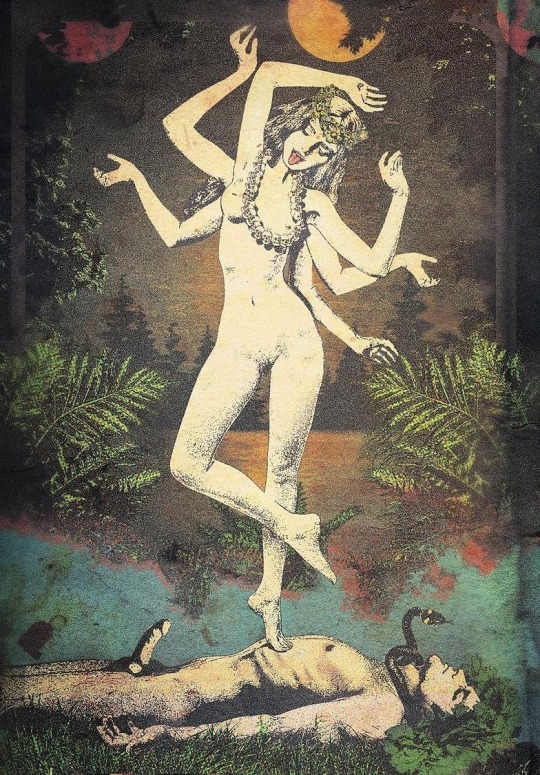
Shiva, in the Shaivite tradition, is the all pervading eternal primeval consciousness of the universe and beyond. It is upon the ultimate, unchanging time-less reality of Shiva, that Kali (time) does her dance, causing the constant cycles of creation, life and death of all things in the universe. Shiva is the substratum upon which Kali acts. Hence, in this part of the Hindu spiritual traditions, the entire cosmic reality is represented by the dance of Kali (time) upon the changeless all pervading consciousness, Shiva.
'Om Aim hrim klim camundayai vicche svaha!'
Dance of Kali
Arthur Berzinsh
208 notes
·
View notes
Text
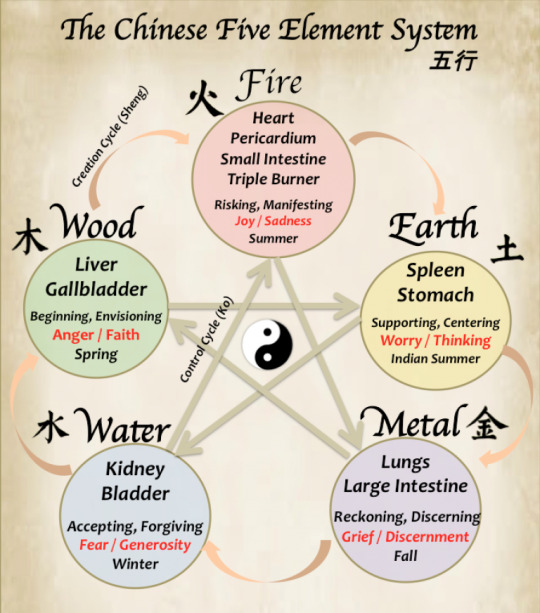
Legends of the humanoids
Reptilian humanoids (5)
Wuxing – the connections between the Five Dragon Kings (Ref) and the Five Elements philosophy
To better understand the origins of the Five Dragon Kings and the ancient Chinese legend, it is worth mentioning the wuxing of natural philosophy, which states that all things are composed of five elements: fire, water, wood, metal and earth.
The underlying idea is that the five elements 'influence each other, and that through their birth and death, heaven and earth change and circulate'.
The five elements are described as followed:
Wood/Spring: a period of growth, which generates abundant vitality, movement and wind.
Fire/Summer: a period of swelling, flowering, expanding with heat.
Earth is associated with ripening of grains in the yellow fields of late summer.
Metal/Autumn: a period of harvesting, collecting and dryness.
Water/Winter: a period of retreat, stillness, contracting and coolness.
The wuxing system, in use since the Han dynasty (2nd century BCE), appears in many seemingly disparate fields of early Chinese thought, including music, feng shui, alchemy, astrology, martial arts, military strategy, I Ching divination, and traditional medicine, serving as a metaphysics based on cosmic analogy.
The wuxing originally referred to the five major planets (Jupiter, Saturn, Mercury, Mars and Venus), which were thought of as the five forces that create life on earth. Wu Xing litterally means moving star and describes the five types of Qi (all the vital substances) cycles through various stages of transformation. As yin and yang continuously adjust to one another and transform into one another in a never-ending dance of harmony, they tend to do so in a predictable pattern.
The lists of correlations for the five elements are diverse, but there are two cycles explaining the major interaction. The yin-yang interaction, which by increasing or decreasing the qualities and functions associated with a particular phase, it may either nourish a phase that is in deficiency or drain a phase that is in excess or restrain a phase that is exerting too much influence (see below):
The Creation Cycle (Yang)
Wood feeds Fire
Fire creates Earth (ash)
Earth bears Metal
Metal collects Water
Water nourishes Wood
The Destruction Cycle (Yin)
Wood parts Earth
Earth dams (or absorbs) Water
Water extinguishes Fire
Fire melts Metal
Metal chops Wood
The Huainanzi (2nd BCE) describes the five colored dragons (azure/green, red, white, black, yellow) and their associations (Chapter 4: Terrestrial Forms), as well as the placement of sacred beasts in the five directions (the Four Symbols beasts, dragon, tiger, bird, tortoise in the four cardinal directions and the yellow dragon.
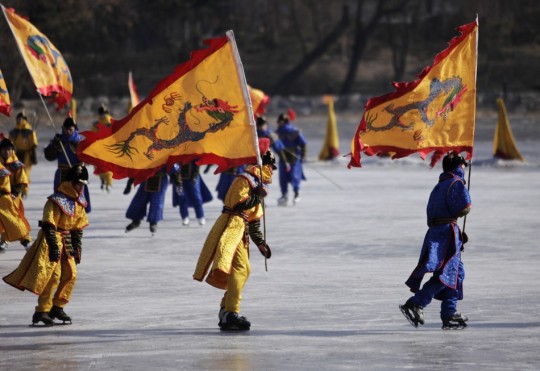
伝説のヒューマノイドたち
ヒト型爬虫類 (5)
五方龍王(参照)と五行思想の関連性
ここで、五方龍王の起源、そして古代中国の伝説をよく理解するために、万物は火・水・木・金・土の5種類の元素からなる、という自然哲学の五行思想について触れておきましょう。 5種類の元素は「互いに影響を与え合い、その生滅盛衰によって天地万物が変化し、循環する」という考えが根底に存在する。
五行は次のように説明されている:
木は、春の豊かな生命力、動き、風を生み出す成長期。
火は、夏の太陽の暖かさの下で行われる成熟の過程、熱で膨張する時期。
土は、晩夏の黄色い野原での穀物の成熟に関連している。
金は、秋の収穫、収集、乾燥の時期。
水は、冬の雪に覆われた暗い大地の中に潜む新しい生命の可能性と静寂の時期。 漢の時代 (紀元前2世紀頃) から使用されてきた五行説は、音楽、風水、錬金術、占星術、武術、軍事戦略、易経、伝統医学など、中国初期の思想の一見バラバラに見える多くの分野に登場し、宇宙の類推に基づく形而上学として機能している。
���行とは文字通り「動く星」を意味し、五種類の気(生命維持に必要なすべての物質)が様々な変容の段階を経て循環することを表している。陰と陽は絶え間なく互いに調整し合い、調和の終わりのないダンスで互いに変化していくため、予測可能なパターンで変化する傾向がある。
五行の相関関係は多様だが、主要な相互作用を説明する2つのサイクルがある。陰陽の相互作用は、特定の相に関連する資質や機能を増減させることで、不足している相に栄養を与えたり、過剰な相を排出したり、影響力を及ぼしすぎている相を抑制したりする (以下参照):
相生(陽)のサイクル
木は燃えて火を生む
火が土 (灰) をつくる
土は金属を産出する
金属は表面に水を集める
水は木を育てる
相克(陰)のサイクル
木は大地を構成する
土は水を堰き止める
水は火を消す
火は金属を溶かす
金属が木を切る
『淮南子』(紀元前2世紀)には、五色の龍(紺碧・緑、赤、白、黒、黄)とその関連性 (第4章: 地の形)、五方位への聖獣の配置(四枢の四象徴獣、龍、虎、鳥、亀、黄龍)が記述されている。
#wuxing#5 dragon kings#5 elements#taoism#yin yang#humanoids#legendary creatures#hybrids#hybrid beasts#cryptids#therianthropy#legend#mythology#folklore#dragon#nature#art
117 notes
·
View notes
Note
Can I say I adore your writing and artwork? Everything sounds so poetic and powerful. It all flows smoothly like a summer breeze.
I love the idea of your Aeon of Dreams!Reader, such a big-brain moment. I imagine how critical it is for Aeon of Dreams!Reader to get some sleep, and for their unconscious state to remain undisturbed.
All Aeons are godlike beings and are a near indestructible force of nature, expanding or ripping apart life in the cosmos. Maybe we affect the universe in a major way, in a mental, subconscious method; contributing to the cycle of life and destruction. The interstellar creation of stars, and the brutal collapse of black holes, all connect to our dreams.
I can see us, calm and unwavering to the wanders sail across our temple. An illusion of hello from a flick of our soft eyelashes. Laying on a bed of comfortable nebula and solar winds, a cosmic sleeping beauty, our awareness and verbal connection a slow drift away from the outside world.
Mortals can only dream how beautiful we must seem in our shut-eye, no wonder why Yaoshi loves to visit our during our sleepy centuries.
Seeing the Aeon of Dreams count their magic sheep, watching their dazed heart amongst these jewels of the edgeless sky is to kill for.
And Yaoshi doesn't like being disallowed to see the holder of their desires.
Please your writing already sounds infinitely better than mine 🤧
I’m going to leave this ask by itself since the writing is already peak and instead add a concept photo of aeon of dreams reader and saint sanctus medicus reader.
Sorry this look wayyyy longer than expected and i wasnt even able to finish it all aaaaaa ;^;;;;
[ here’s a link to the fic where aeon of dreams is featured in ]
notes: this is how i interpret the characters, but you guys are free to imagine to look however you like.
aeon of dreams is supposed to be in their “cradle” see those two earrings? those are two dwarf stars haha theyre massive
i imagine saint sanctus medicus! reader to be a distant relative of blade.
they never cut their hair as a sign of filial piety and since they’re like thousands and thousands of years old it grew to be quite the length. not quite visible in my drawings.


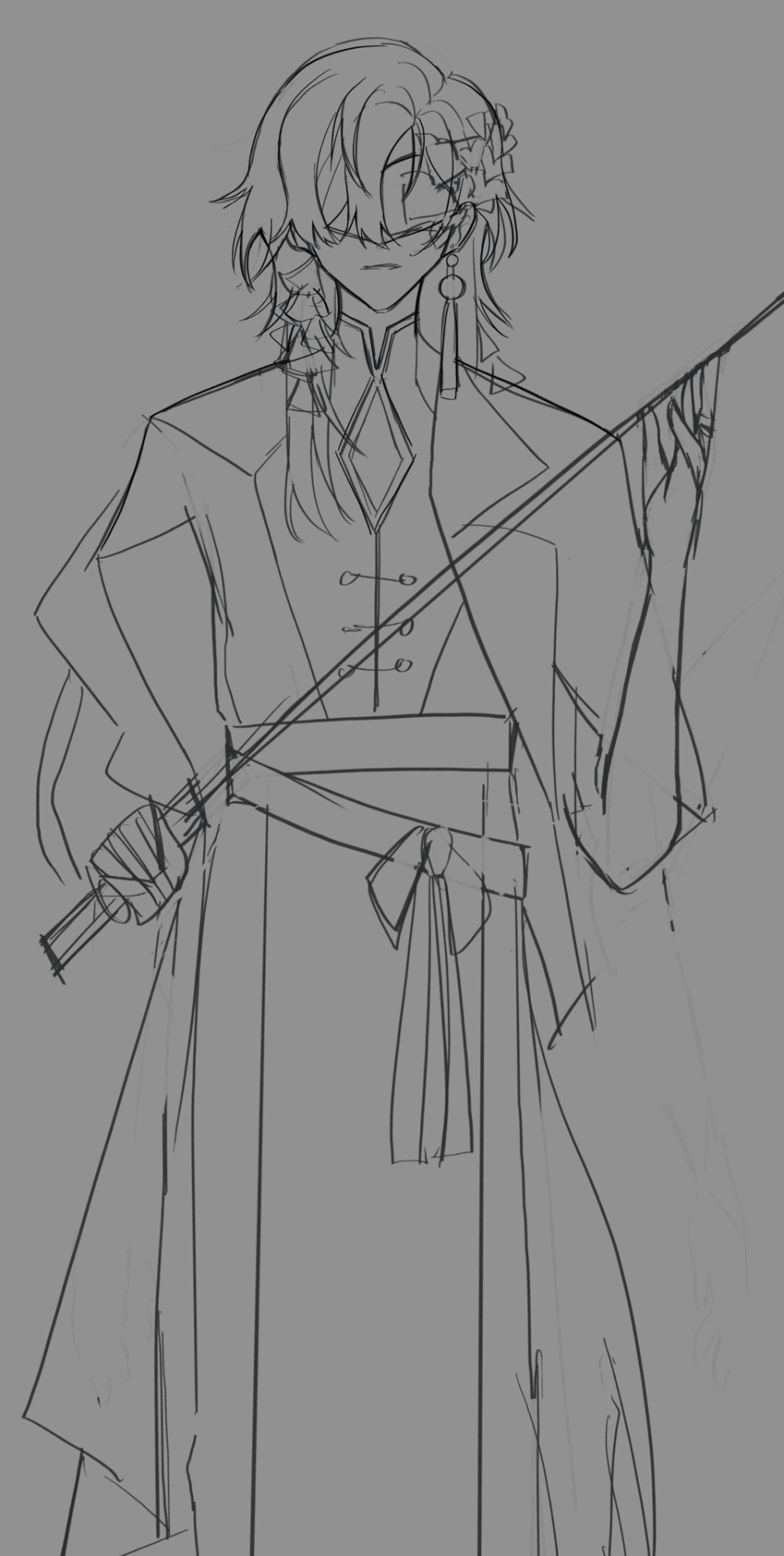
#hns.txt💬#hns.ask💌#honkai star rail#yandere honkai star rail#yandere#yandere x reader#yandere imagine#yandere fic#hsr#yandere hsr#yandere honkai star rail x reader#yandere hsr x reader#yandere nanook#yandere yaoshi#yandere aeons#hsr oc#oc#my ocs#art
529 notes
·
View notes
Text
Oh man oh man I just saw an Outer Wilds fanart done in the style of a tarot card and I had to immediately drop everything I was doing to think through what an all-Outer-Wilds version of the major arcana would be. I think I have it, it's under the read more because it's long and also there are major major spoilers (unsurprisingly).
0. The Fool: The Hatchling
This one is easy. The hatchling is at the beginning of their journey, stepping into the unknown.
1. The Magician: Pye
Bringing intention and direction, choosing a path, and channeling cosmic power - yeah I think Pye of “science compels us to explode the sun” fame fits this pretty perfectly.
2. The High Priestess: The Nomai Statues
Ok, I kinda struggled with this one, but I think it works. Hidden knowledge, dealing with the mind, the subsconscious vs conscious, veils between worlds. The statues are mysterious and they transmit your knowledge to your previous selves. That fits decently well and also I don’t have a better idea.
3. The Empress: Timber Hearth
Ok, I really struggled with this one. I’m going for the themes of creation, life, nature, and nurturing by choosing Timber Hearth since it is literally where life in the solar system grew. I'm not happy with this but whatever.
4. The Emperor: The Vault
Authority, establishment, control to the point of domination. They sealed the Prisoner in the vault for defying the system. Plus the Vault looks cool and imposing so we have that going for us.
5. The Hierophant: Solanum
Connecting to the past, passing on wisdom, initiation into a spiritual practice (aka reaching the QM). Yeah this is Solanum.
6. The Lovers: Nomai Graveyard
(Emotional damage pt 1) I’m so so sorry but it works so well. What says love besides holding your friends close as you all asphyxiate to death?
7. The Chariot: Your Ship
Maybe this one is a little too literal but I still think it fits. Determination and drive, knowing where you want to go, overcoming obstacles. Also it's literally your ship. It works.
8. Strength: Chert
I’m going to be honest.... Chert is here because they were the only traveler that didn’t have a card that clearly fit, and I couldn’t leave only them out when I gave all the other travelers cards, and I didn’t have another idea for what Strength should be. Hand-wavy explanation: view Strength as getting to the core of confronting your fear and anger and pain and coming out the other side, and, well, Chert having a existential breakdown and then coming to a place of calm acceptance about the inevitability of death sort of… fits…. look just pretend this one makes sense and let’s move along quickly -
9. The Hermit: Feldspar
Self-explanatory. The literal solitude, yeah, but also Feldspar is this mentor figure who guides you on your journey, and is apparently happy to just sit and chill in the nightmare hell that is Dark Bramble. It works.
10. The Wheel of Fortune: The Advanced Warp Core in the ATP
Change, fate, turning points, cycles - and the breaking of cycles. This is another easy one.
11. Justice: The Prisoner
There are a lot of ways you can interpret this. You have the Prisoner defying their society’s rules in an attempt to do what is right, and the strangers believing they were dispensing justice by imprisoning them but actually causing harm. The more I think about this one the more I like it.
12. The Hanged Man: Gabbro
Another easy one. Taking a pause to rest, passivity, acceptance, independence, seeing things differently. Plus you even get the literal imagery of them hanging on the hammock, floating in zero-g. This is a slam dunk.
13. Death: The skull + flower from the Strangers’ visions of the Eye
Letting go to allow the world to change and let new things grow is literally what this vision is about. Plus it’s a skull! I mean it’s right there.
14. Temperance: Riebeck
Steadiness, moderation, plus the duality of Riebeck being terrified of space but still choosing to go out into it.
15. The Devil: The Eye Signal Blocker
Destruction, complicity in oppression, avoiding accountability, confronting fear (or avoiding doing so). Oh yeah I’m so on board with this being the Eye Signal Blocker.
16. The Tower: The Interloper
(Emotional damage part 2). The destruction of the status quo, disaster, tragedy, upheaval. There is no question here.
17. The Star: The Eye
Searching for purpose, navigating a path, themes of renewal. Plus it even kinda has a star-like shape. It’s the Eye.
18. The Moon: The Quantum Moon
Look, sometimes the literal choice works. Mystery, secrets, illusions? Yeah, that’s QM alright.
19. The Sun: The Sun
Who could have seen this one coming???
….The thing is… the meaning of the tarot Sun card absolutely doesn’t match the purpose the sun plays in Outer Wilds. But there is nothing else that could be the sun. It’s the sun!
20. Judgement: The Campfire in the Starry Forest
Facing yourself, facing the truth, acceptance, ultimately letting go so that you can reach the end. Yeah.
21. The World: The Big Bang
The end, and the beginning.
#I *need* to learn to draw fr so I can do this aghhhh#outer wilds#outer wilds spoilers#echoes of the eye
85 notes
·
View notes
Text
Rune Meanings
These are a few keywords and themes for rune symbols along with their modern alphabet equivalents.
*longer read*
Ansuz - Message, A
God, Ancestors, Revelation, Signs, Visions, Insight, Message, Knowledge, Communication
Berkana - Birch, B
Earth Mother, Birth, Fertility, Growth, Renewal, New beginnings, Creation, New projects, Creativity
Kaunaz - Torch, C/K/Q
Fire, Knowledge, Enlightenment, Comprehension, Insight, Illumination, Calling, Purpose, Idea
Dagaz - Dawn, D
Intuition, Light Within, Day, Awakening, Consciousness, Clarity, Hope, Balance, Growth, New cycles
Ehwaz - Horse, E
Twin Gods, Relationships, Progress, Movement, Harmony, Trust, Loyalty, Friendship, Assistance, Duality, Animal instincts
Fehu - Wealth, F
Wealth, Mother Rune, Abundance, Luck, Hope, Prosperity, Fortune
Gebo - Gift, G
Divine Interaction, Generosity, Partnership, Gifts, Talents, Charity, Service, Assistance, Luck, Fortune
Hagalaz - Hail (as in the type of weather), H
Transformation, Egg of Life, Destruction, Natural wrath, Uncontrolled forces, Testing, Change, External input
Isa - Ice, I
Cosmic Coherence, Suspension, Delay, Stillness, Frustration, Blocks, Pause, Waiting
Jera - Harvest, J
Earth, Right Action, Year, conclusion, Life cycle, Endings and beginnings, Abundance, Learnings, Growth
Laguz - Lake, L
Fertilty, Living Renewal, Water, Intuition, Imagination, Healing, Dreams, Mysteries, Insight, Instinct, Knowing
Mannaz - Man, M
Divine Union Manifestation, Humanity, Collective, Mortality, Community, Relationships, Morals, Values
Nauthiz - Neccesity, N
Needs, Friction, Shadow, Restriction, Disagreements, Resistance, Survival, Lacking
Othila - Heritage, O
Genetics, Legacy, inheritance, Spiritual growth, Abundance, Values, Contribution
Peorth - Destiny, P
Divination, Luck, Primal law, Fate, Mysteries, Occult, Feminine fertility, Chance, Fortune, Mysticism, Unknown
Raido - Journey, R
Solar Chariot, Rhythm, Progress, Movement, Evolution, Perspective, Journey, Travel
Sowulo - Sun, S
Thunderbolt, Wheel of Power, Success, Vitality, Inspiration, Justice, Success, Joy, Happiness, Abundance
Teiwaz - Victory, T
Masculine Gods, Warrior Rune, Leadership, Rationality, Honour, Bravery, Courage, Strength, Perseverance, Endurance
Uruz - Power, U
Primal Creative Force, Gateway, Strength, Endurance, Health, Courage, Vigour, Vitality, Force, Perseverance
Wunjo - Joy, V/W
Kinship, Heritage, Joy, Pleasure, Feast, Celebration, Comfort, Belonging, Community, Success, Festivities
Thurisaz - Thor, X, th
Protection, Polarity, Regeneration, Defence, Challenge, Danger, Attack, Strength
Eiwaz - Yew, Y
Tree of Life, Dreaming, Magic, Connection, Inspiration, Endurance, Sacred knowledge, Protection, Life cycles, Divinity
Algiz - Elk, Z
Divine Protection, Sanctuary, Protection, Guardian, Awakening, Courage, Defence, Instincts
Inguz - Fertility, NG
True Love, Music, Harmony, Fertility, Virility, Inner growth, Virtue, Peace, Harmony
Merry meet,
Atti <3
#witchcraft#witchythings#eclectic witch#grimoire#chaos magick#witchy shit#witch blog#chaos witch#witch tip#witchblr#magic runes#rune reading#nordic runes#witchcraft 101#witch stuff#witchery#witch#baby witch tips#moon witch#dark witch#hedge witch#divination#tarotblr#tarot community#tarot witch
972 notes
·
View notes
Text
Just want to put out there the interpretation of the Golden Goddesses as neutral entities.
Hylia and Demise—as subset of all creation—are implicitly both products of the Goddesses. The dynamic of opposing cosmic forces could arguably start with them. While “good and evil” are often attributed to these two, it might be more accurate to say that they represent “enthalpy and entropy.”
Of course, another creation of the Goddesses is wish-granting Sacred MacGuffin that would reflect the heart of the mortal who found it. Seems like a wild choice to make such a thing available at all… unless it was part of a larger design.
While it’s stated that the Goddesses gave Hylia the Triforce for safekeeping, perhaps it was less because Hylia was fundamentally “good” and it needed to be kept away from “evil,” so much as she was a protector of (her) people. She did what she had to do to build a succession plan after she died, but it could easily be assumed that it was the Hylians who decided to lean into it and transform Zelda's lineage into a full-on theocratic monarchy.
One interpretation of a cosmic design is that everything moves in a cycle: day/night, the moon and tides, the seasons, and—in a system where people are canonically reincarnated—life and death. Perhaps a larger cycle of creation, destruction, rebuilding, and collapse was baked in from the very beginning. After all, some classifications of forest fires can ultimately help the long term health of forests. Sometimes overgrowth can disrupt the balance of a larger ecosystem. Is the ivy that covers a tree “good” or “evil,” as it endangers the life of the tree, but benefits local pollinators, and reduces additional C02? Moral judgement is a human construct, and the narratives around morality at such an abstractly high level are going to be inaccurate (and intrinsically biased) when anchored to a perspective that cannot see the full picture; which is something that is inaccessible to people.
But fast forward several epochs. How interesting that the first person to find the Triforce (after all the Skyward Sword shenanigans) was Ganondorf. Was it because of tireless research? Luck? Total coincidence? Ocarina of Time made it difficult to tell, though the histories written from the Hylian perspective claim that he “stole” it from the dominant theocratic monarchy (which is one way to defensively interpret the event, given how much his acquisition of the Triforce could have completely undermined the authority of the Royal Family as a divinely-ordained institution).
But then in Twilight Princess, the Triforce of Power was mysteriously—likely divinely—granted to Ganondorf in his moment of need. This was no coincidence, and it speaks of his role in a greater cosmic design. He was given this power because he was meant to have it. Why? Maybe we’ll canonically learn more in TotK.
#legend of zelda#a link to the past#ocarina of time#twilight princess#ganondorf#oot ganondorf#tp ganondorf#zelda meta#zelda headcanon
189 notes
·
View notes
Text
COULD DARK ENERGY TRIGGER ANOTHER BIG BANG??
Blog#324
Saturday, August 19th, 2023
Welcome back,
Could the universe's end be different from a bang or a whimper? Two theoretical physicists suggest a new possibility: the universe might be perpetual. These scientists explored dark energy's role in cosmic expansion, proposing that it could intermittently switch on and off, leading to cycles of growth and contraction.
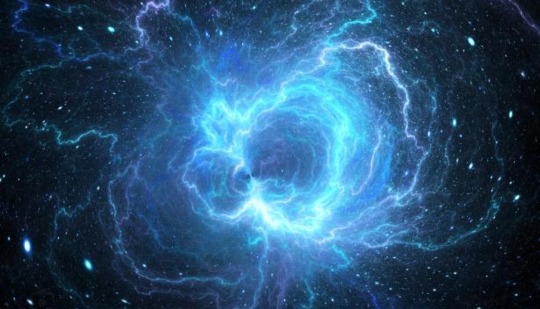
This process could trigger new Big Bangs, giving rise to new universes.
Currently, the universe is rapidly expanding due to mysterious dark energy. If this expansion continues, the universe could ultimately stretch infinitely, tearing matter apart. This echoes the extreme conditions during the initial Big Bang, followed by a phase of rapid inflation.

The physicists' study, published on arXiv, examines a model where dark energy always played a role, aiming to understand its connection to both early and present accelerated expansions.
The theory suggests that the universe might go through repeated cycles of expansion, contraction, and rebirth, driven by evolving dark energy.
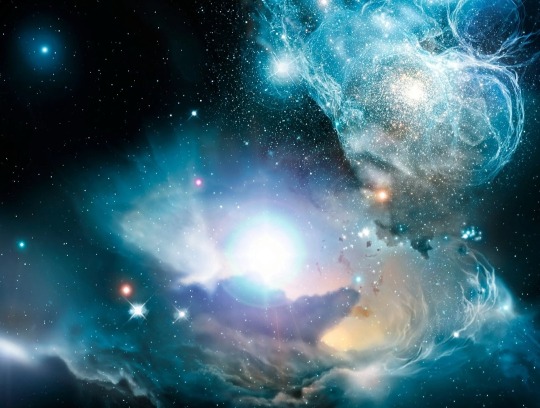
Certainly. The concept of the universe undergoing perpetual cycles of expansion, contraction, and rebirth is intriguing and challenges our traditional understanding of its fate. This new model proposes that instead of a single linear trajectory, the universe's evolution might resemble a continuous loop of creation and destruction.
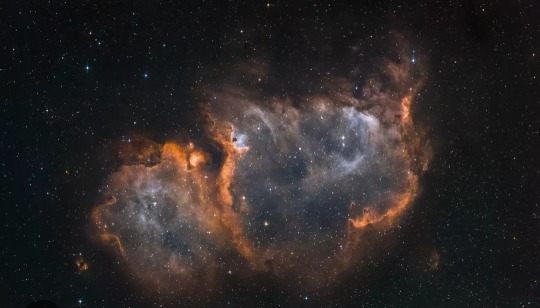
In this scenario, the universe's existence is characterized by phases of expansion driven by dark energy. As the universe grows to a certain size, dark energy undergoes a transformation, causing the universe to contract in what's referred to as a "big crunch."

However, before reaching a point of infinite density, the dark energy changes course again, initiating another rapid phase of inflation and starting the cycle anew.
If this theory holds true, it would address some of the fundamental questions that cosmologists have grappled with. For instance, it could provide an explanation for the nature of dark energy itself, which currently remains one of the most enigmatic forces in the universe.

Additionally, it could shed light on the mysterious processes that occurred during the initial moments of the Big Bang and the subsequent period of inflation.
However, this model also raises its own set of challenges and questions.
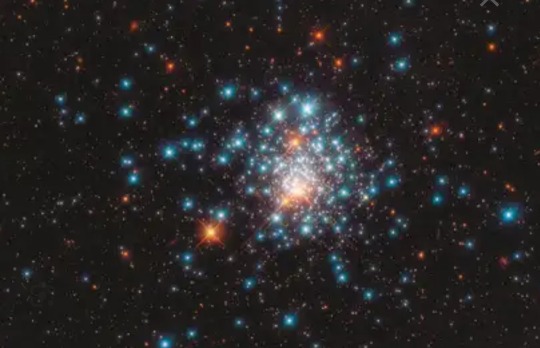
While it offers an intriguing solution to the problem of a singular beginning and the expansion's eventual fate, it would require further evidence and testing to gain broader acceptance within the scientific community.
Nonetheless, the exploration of alternative theories like this one continues to push the boundaries of our understanding of the universe and its complex dynamics.
COMING UP!!
(Wednesday, August 23rd, 2023)
"DO SHADOWS APPEAR ON THE MOON'S SURFACE??"
#astronomy#outer space#alternate universe#astrophysics#universe#spacecraft#white universe#space#parallel universe#astrophotography#how will the universe end
100 notes
·
View notes
Text
Sacred geometry explained
Sacred geometry is a term that refers to the use of specific geometric shapes and patterns that are believed to have symbolic, spiritual, or divine significance. It is often associated with various spiritual and esoteric traditions, including but not limited to, ancient Egyptian, Greek, and Hindu cultures, as well as with modern New Age and metaphysical beliefs.
The underlying belief behind sacred geometry is that certain geometric shapes and patterns have inherent properties that reflect universal principles or divine truths. These shapes are often seen as building blocks of the universe and are believed to hold profound symbolic and metaphysical meanings. Some common examples of sacred geometric shapes include the circle, triangle, square, pentagon, hexagon, and spiral, as well as more complex patterns such as the Flower of Life and the Sri Yantra.
Sacred geometry is often used in various forms of art, architecture, and design, as well as in spiritual practices such as meditation, energy healing, and divination. Proponents of sacred geometry believe that working with these shapes can help align individuals with higher consciousness, activate spiritual energies, and enhance their connection with the divine or cosmic forces.
It's important to note that while sacred geometry is revered in many spiritual and esoteric traditions, its meanings and interpretations can vary depending on cultural, historical, and individual contexts. It is often considered a subjective and symbolic form of knowledge, and its understanding is largely based on personal beliefs and experiences.
Sacred geometry is a multifaceted concept that encompasses various aspects. Here are some key components:
Geometric Shapes: Sacred geometry involves the use of specific geometric shapes, such as circles, triangles, squares, and spirals, which are believed to carry inherent symbolism and meaning. For example, the circle is often seen as representing unity, infinity, and cycles of life and death, while the triangle can symbolize balance, harmony, and the trinity. These shapes are often combined in complex patterns to create sacred geometric designs.
Universal Principles: Sacred geometry suggests that there are underlying universal principles or laws that govern the structure and organization of the universe. It is believed that these principles can be understood and represented through geometric patterns. For example, the Fibonacci sequence, a mathematical sequence found in nature, is often associated with sacred geometry and is represented in the spiral pattern known as the Golden Ratio, which is believed to have aesthetic and harmonious properties.
Spiritual Significance: Sacred geometry is often associated with spiritual or metaphysical beliefs. It is believed that certain geometric shapes and patterns can have a direct connection to higher realms of consciousness or divine energies. For example, the Flower of Life, a complex geometric pattern composed of overlapping circles, is often considered a symbol of creation, and is believed to hold deep spiritual and metaphysical significance in various cultures.
Practical Applications: Sacred geometry is not only seen as a purely abstract concept, but also has practical applications. It is often used in architecture, art, and design to create aesthetically pleasing and harmonious spaces. For example, many ancient temples, churches, and monuments are built using sacred geometric proportions and patterns, with the belief that they can enhance the sacredness or spiritual qualities of the space.
Personal Interpretation: The meanings and interpretations of sacred geometry can vary depending on cultural, historical, and individual contexts. There is no standardized or universally accepted interpretation of sacred geometry. It is often considered a subjective form of knowledge, and individuals may interpret and use it in their own unique ways based on their beliefs, experiences, and intentions.
Historical & Cultural Context: Sacred geometry has roots in various ancient cultures and civilizations, such as ancient Egypt, Greece, China, India, and the Middle East. For example, the use of geometric shapes and patterns can be found in the construction of sacred sites like the pyramids of Egypt, the Parthenon in Greece, and the temples of Angkor Wat in Cambodia. In many of these cultures, geometric shapes and patterns were believed to have cosmological, philosophical, and spiritual significance, and were used to represent cosmic order, divine proportions, and sacred geometry principles.
Esoteric & New Age Beliefs: Sacred geometry is often associated with esoteric and New Age beliefs, which incorporate metaphysical and spiritual concepts. In these contexts, sacred geometry is seen as a tool for exploring higher states of consciousness, connecting with divine energies, and unlocking hidden wisdom. It is often used in practices such as meditation, energy healing, and divination to facilitate spiritual experiences, enhance intuition, and expand consciousness.
Symbolism & Metaphor: Sacred geometry is often interpreted symbolically, with geometric shapes and patterns seen as metaphors for deeper truths or concepts. For example, the Seed of Life, a sacred geometric pattern composed of overlapping circles, is often interpreted as a symbol of creation and the interconnectedness of all life. Similarly, the Tree of Life, a symbolic diagram that appears in various spiritual traditions, is often associated with sacred geometry and represents the interconnectedness of the cosmos.
Vibrational & Energetic Properties: Proponents of sacred geometry often believe that geometric shapes and patterns carry vibrational and energetic properties that can affect the physical, emotional, and spiritual well-being of individuals. For example, specific shapes may be associated with certain frequencies or vibrations, and working with these shapes can help balance or align these energies within the body and environment.
Artistic Expressions: Sacred geometry is often expressed through art, with artists using geometric shapes and patterns to create visually captivating and spiritually meaningful works. Sacred geometric art can be found in various forms, such as paintings, sculptures, mandalas, and jewelry. These artworks are often appreciated not only for their aesthetic qualities, but also for their potential to evoke spiritual experiences, insights, and connections.
Overall, sacred geometry is a complex and multifaceted concept that encompasses geometric shapes, universal principles, spiritual significance, practical applications, and personal interpretation. It is often considered a holistic approach to understanding the underlying patterns and principles of the universe and the interconnectedness of all things.
#sacred geometry#witchblr#witchcore#witchcraft#witchlife#white witch#beginner witch#witch tips#grimoire#spirituality#book of shadows
142 notes
·
View notes